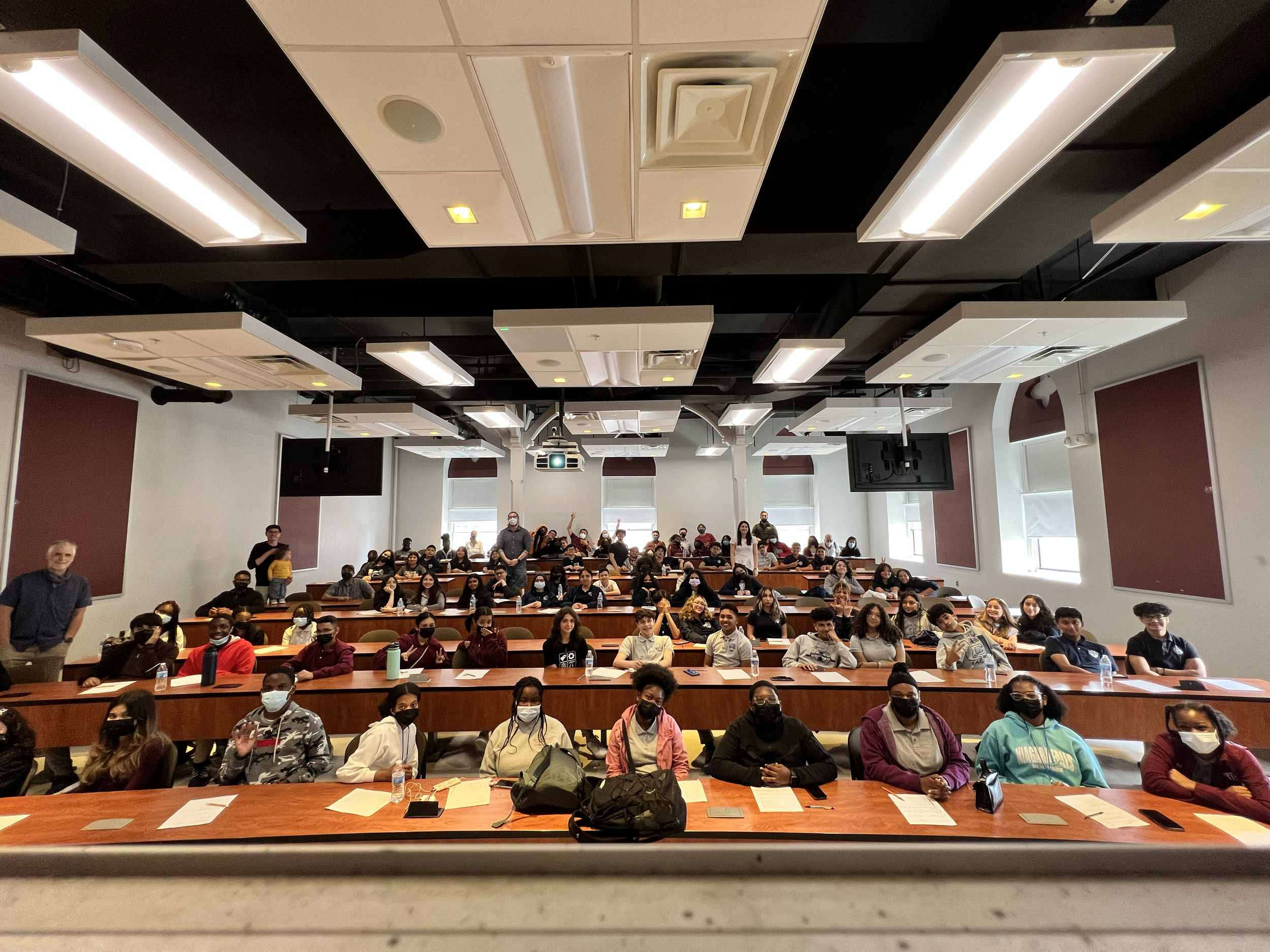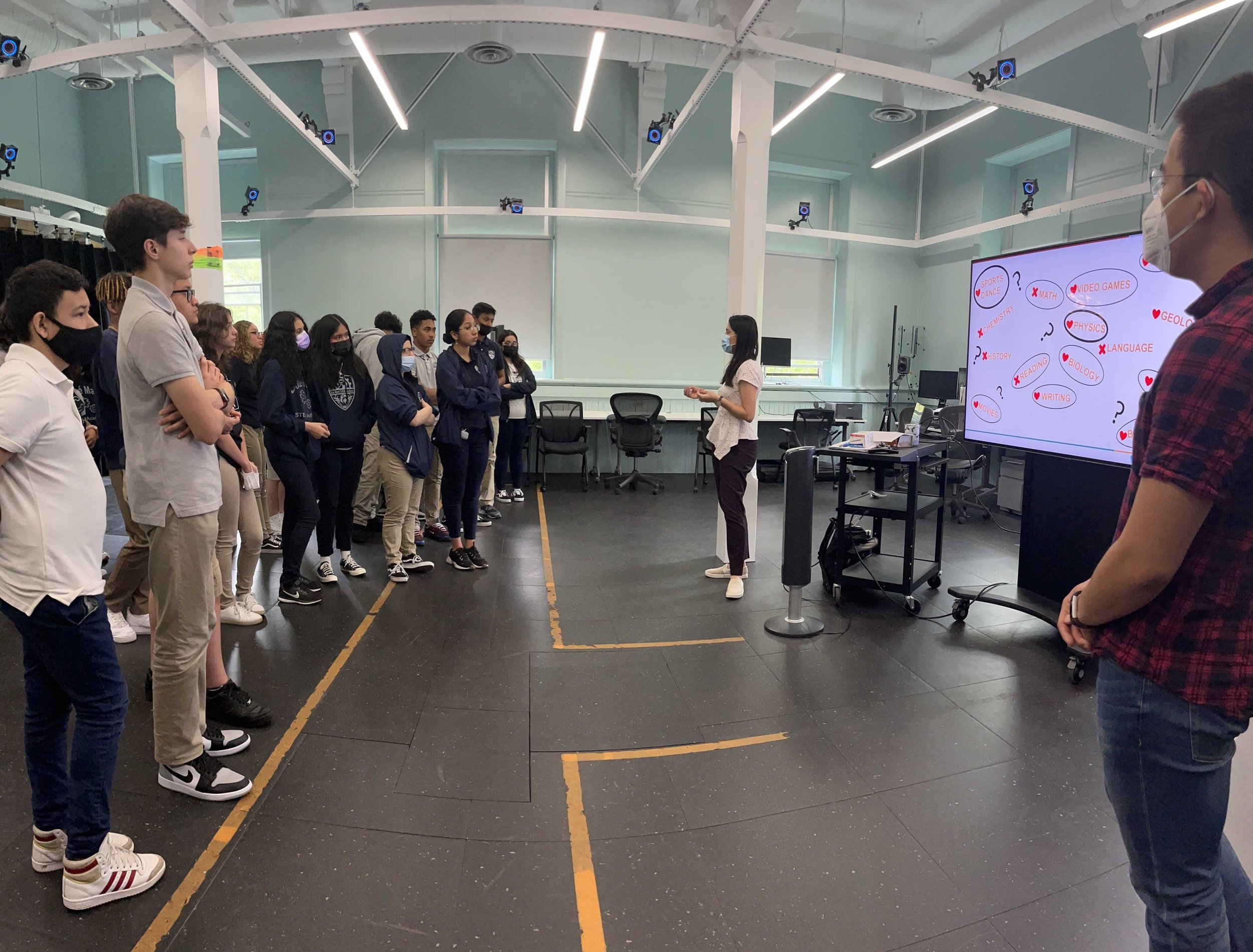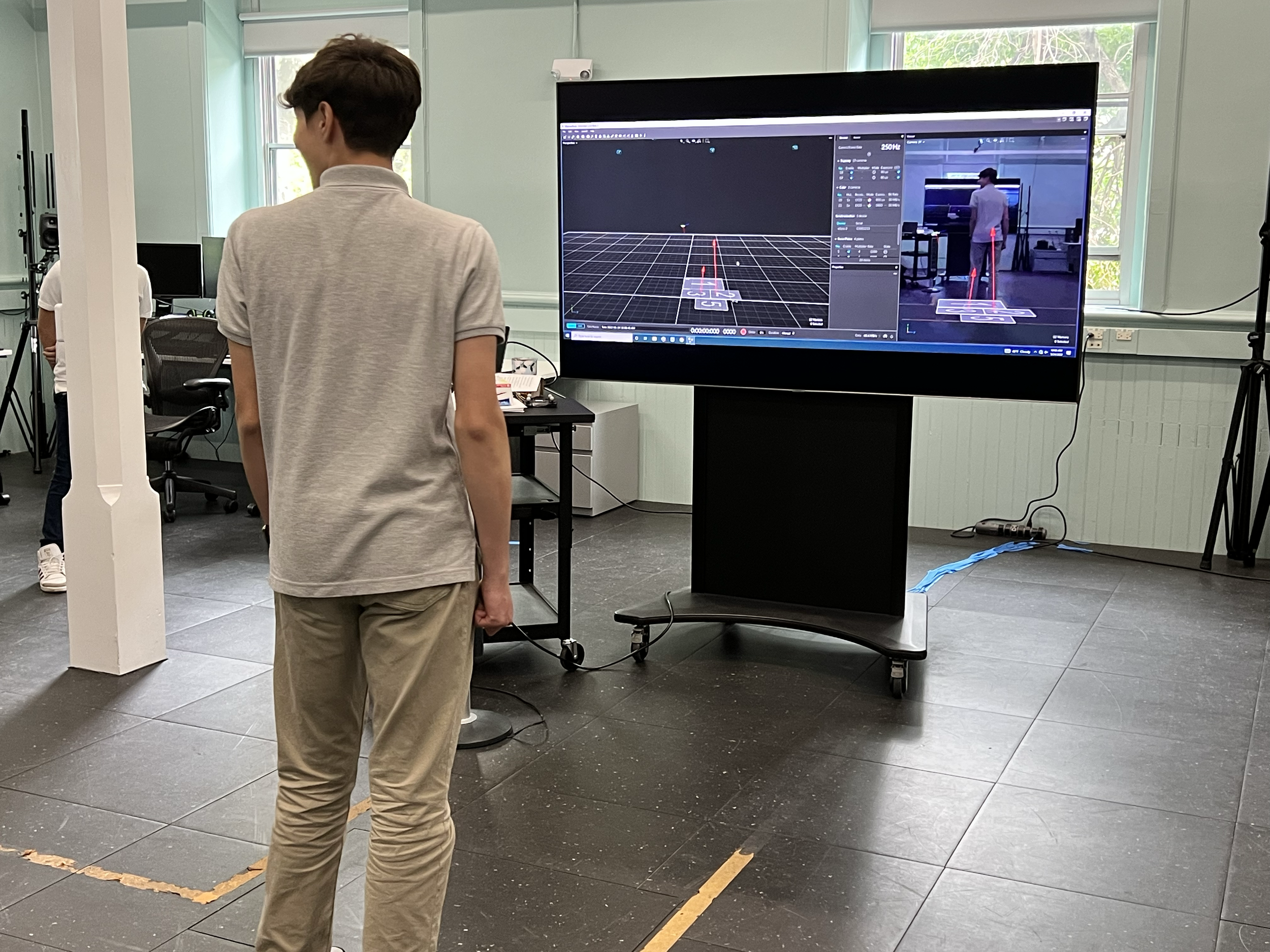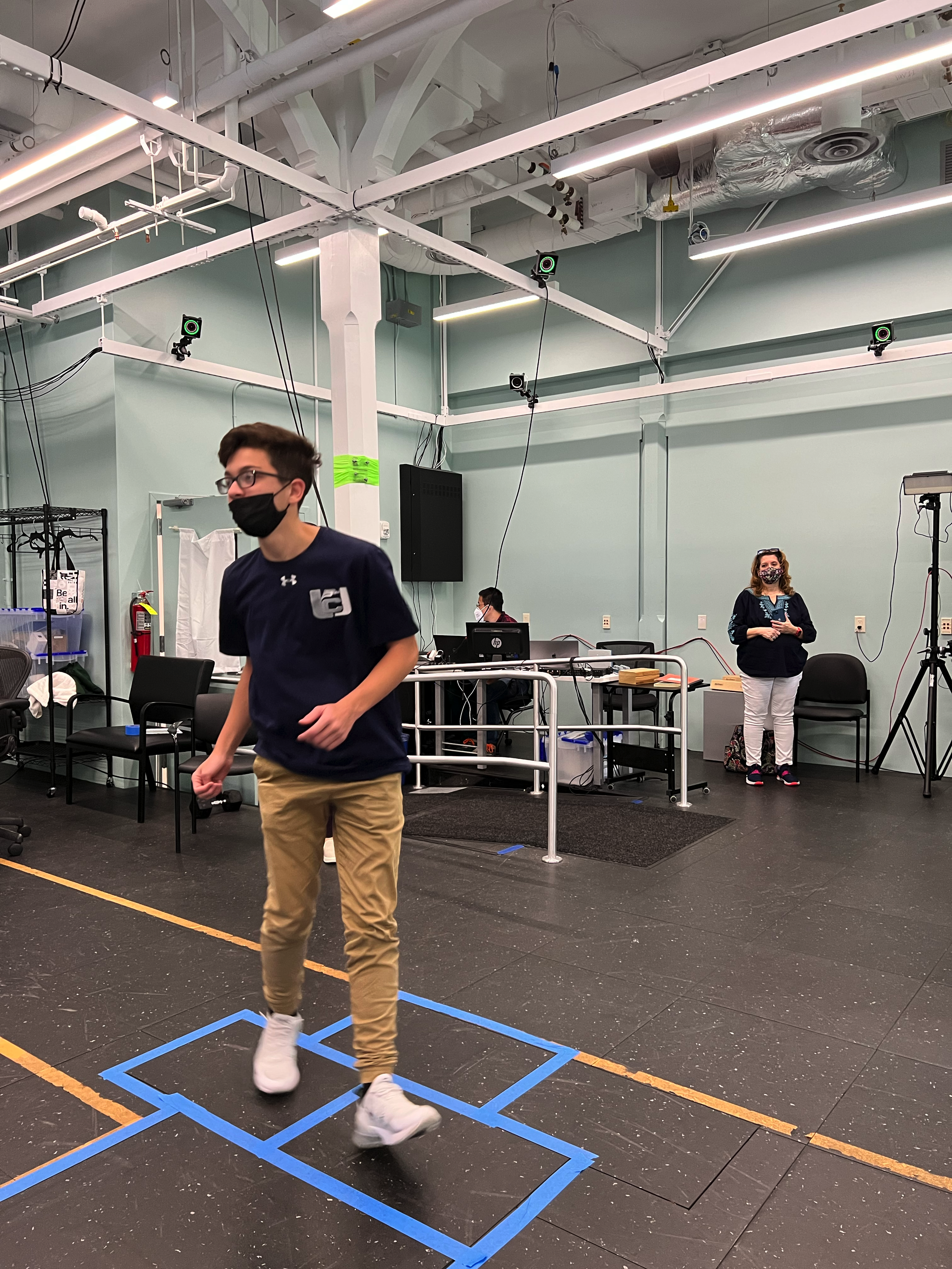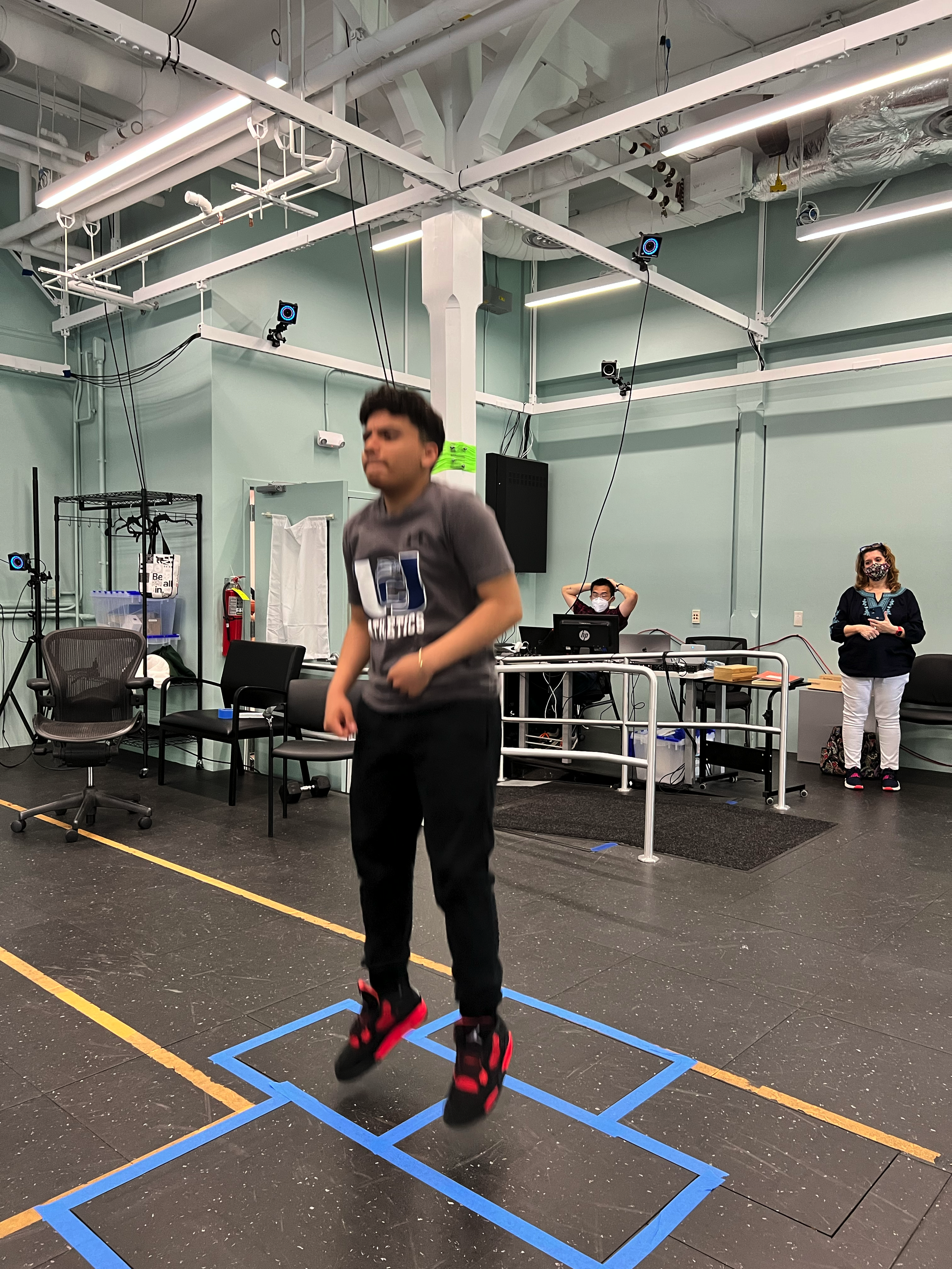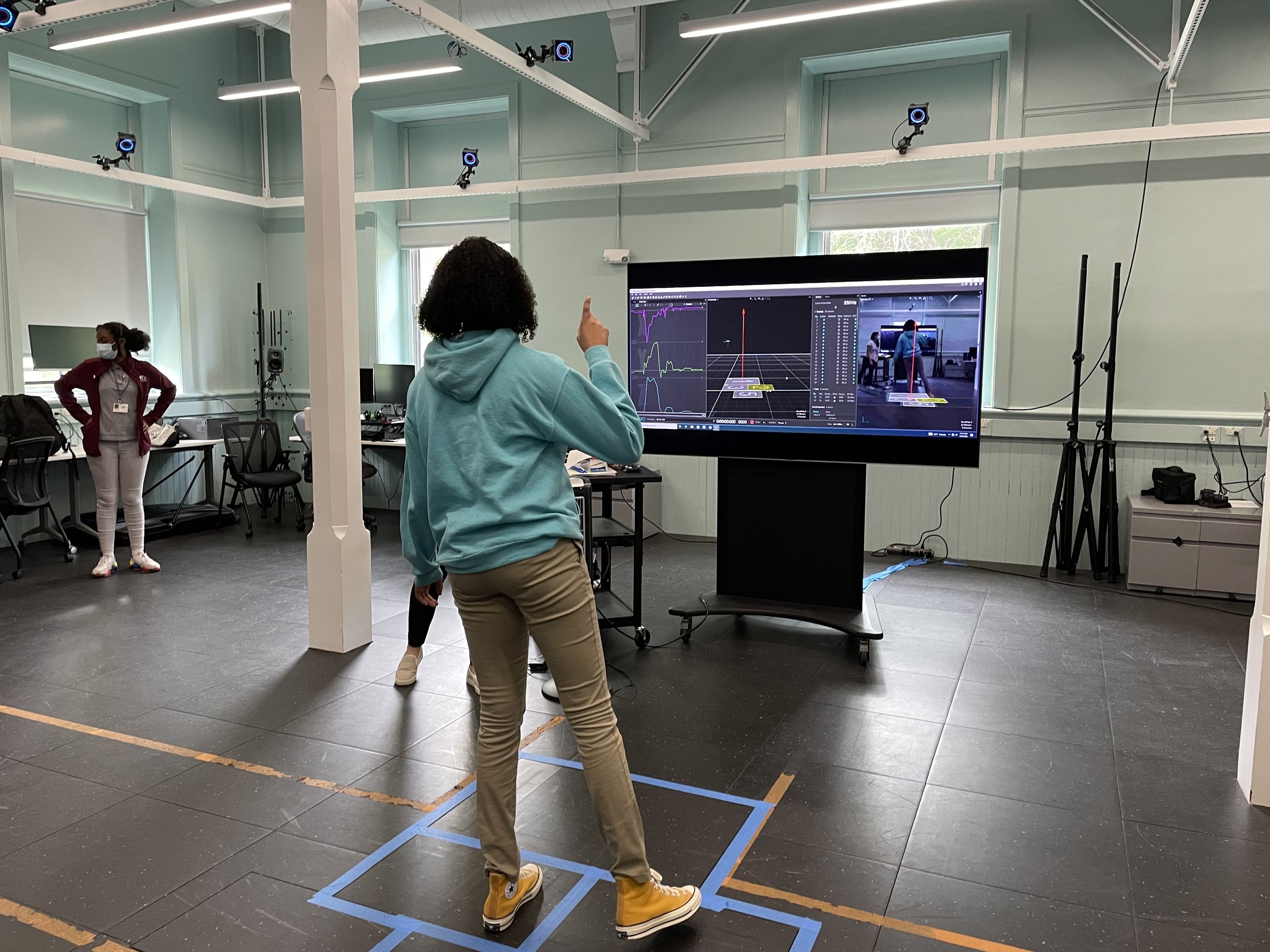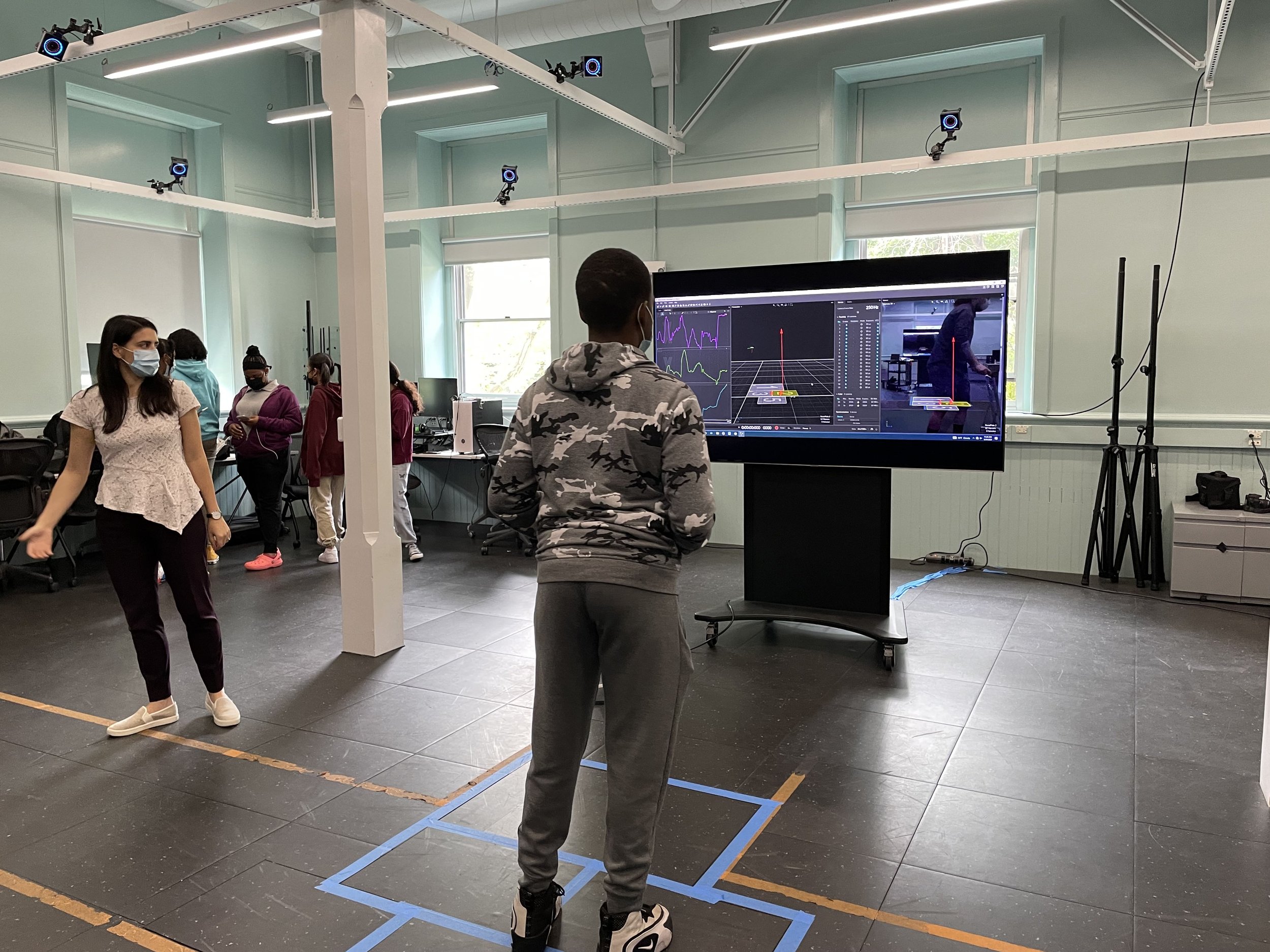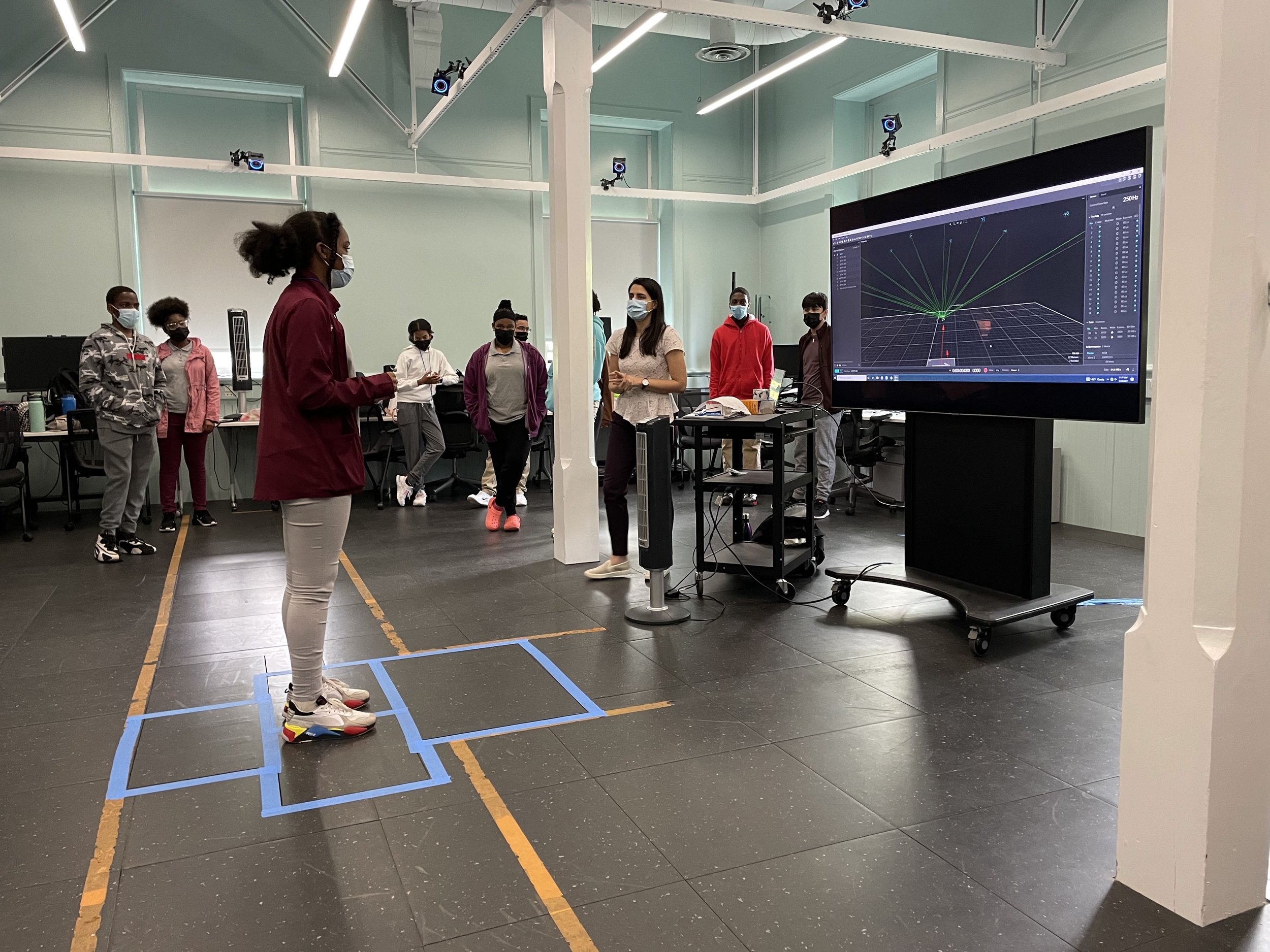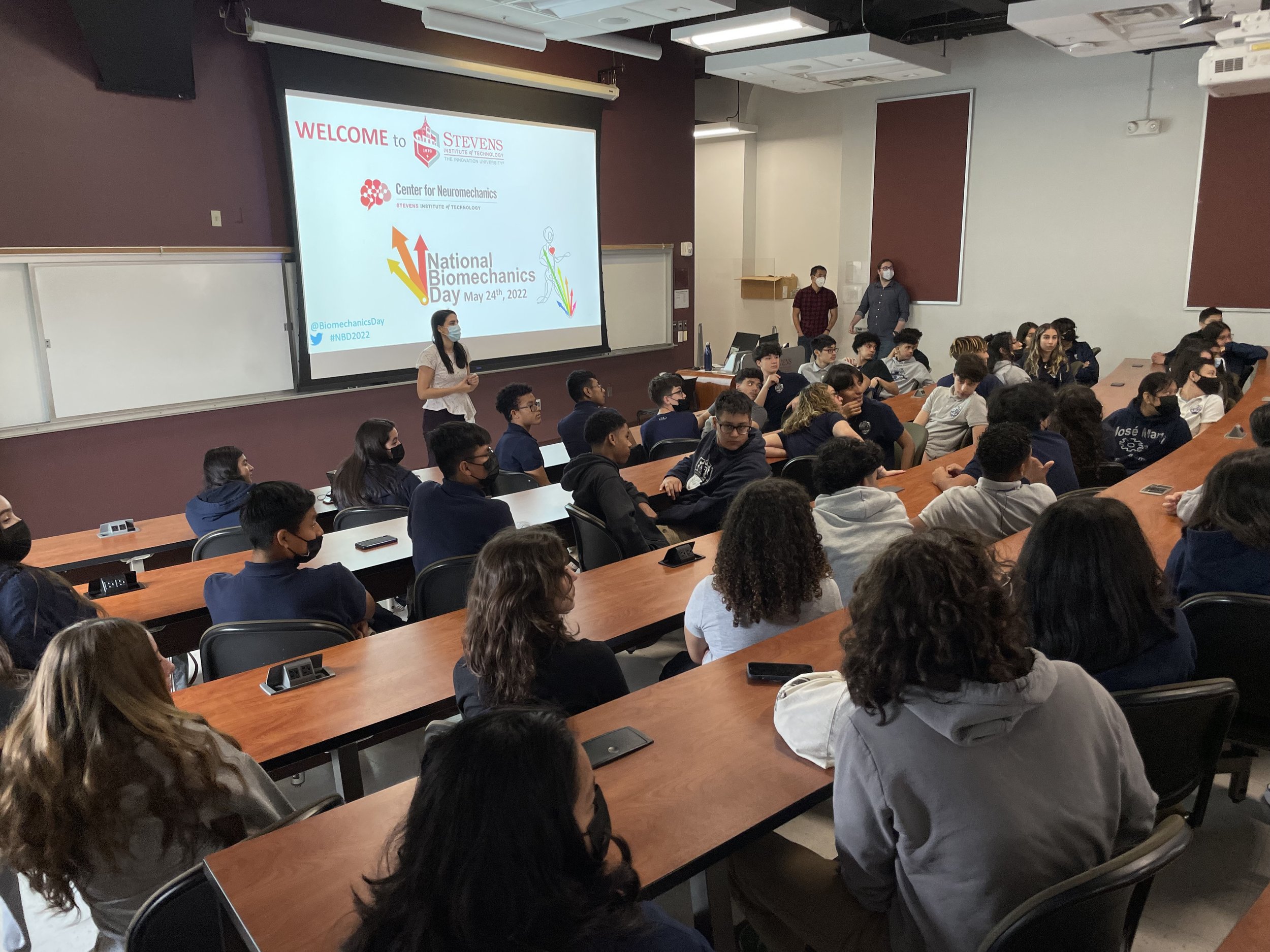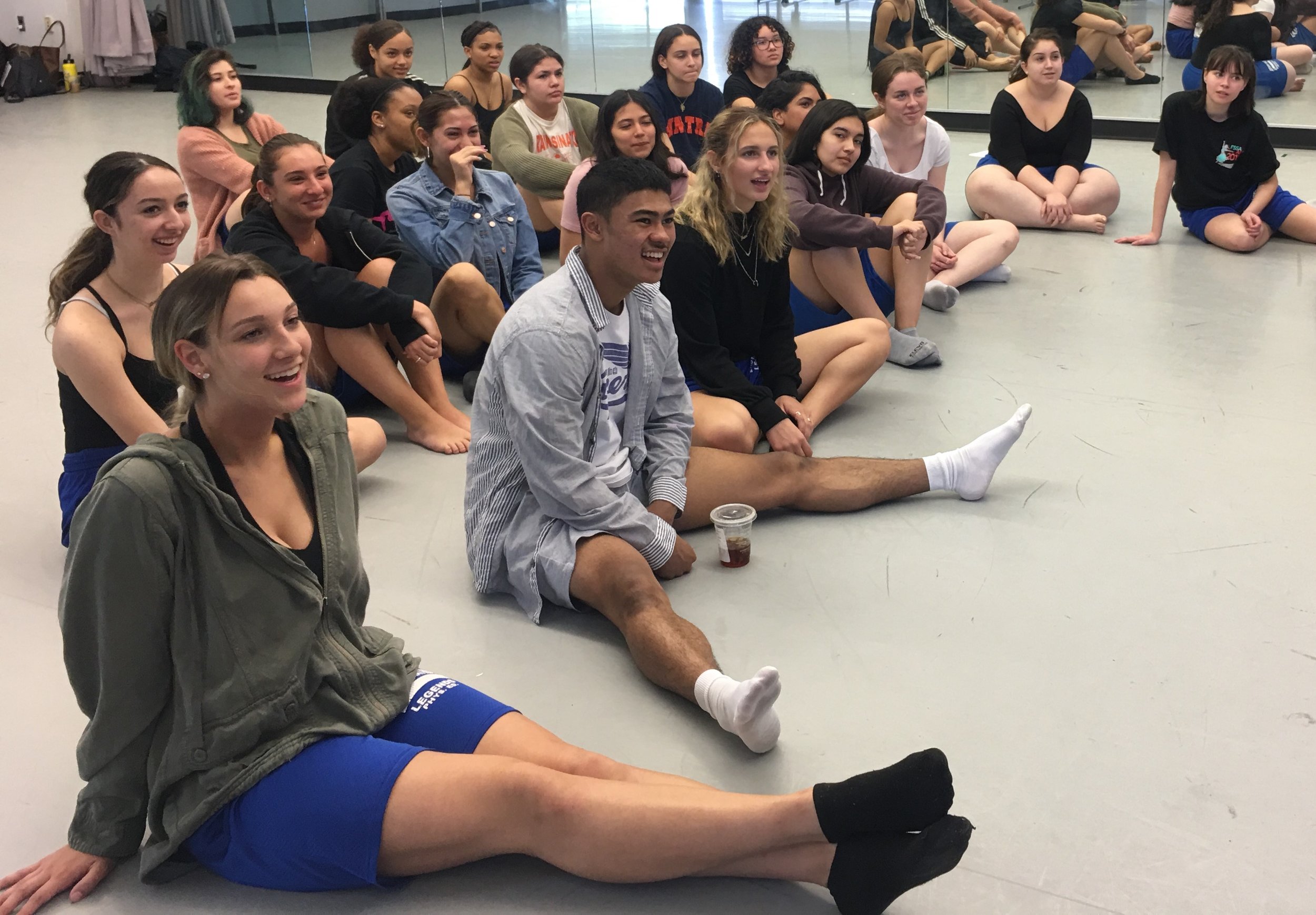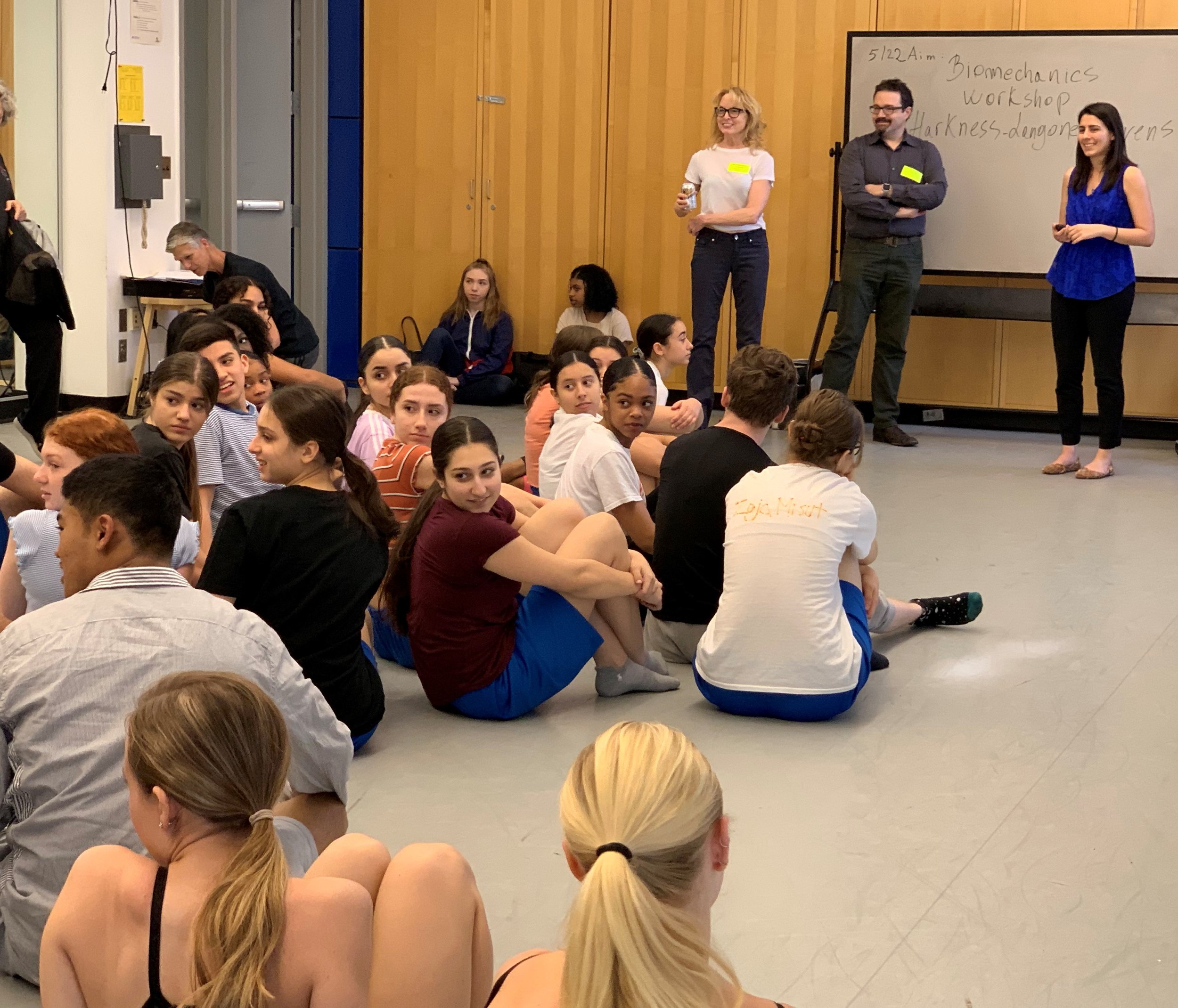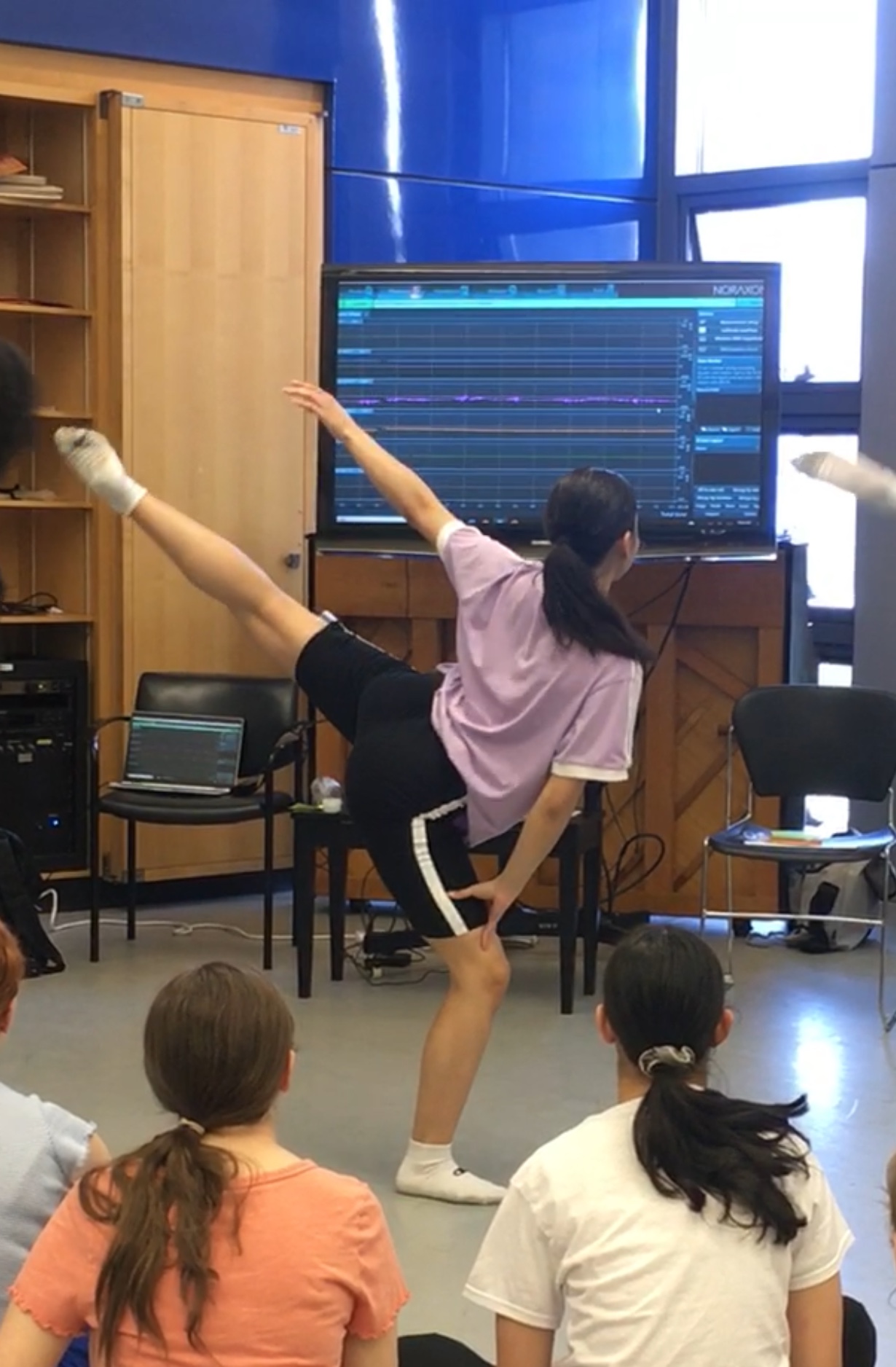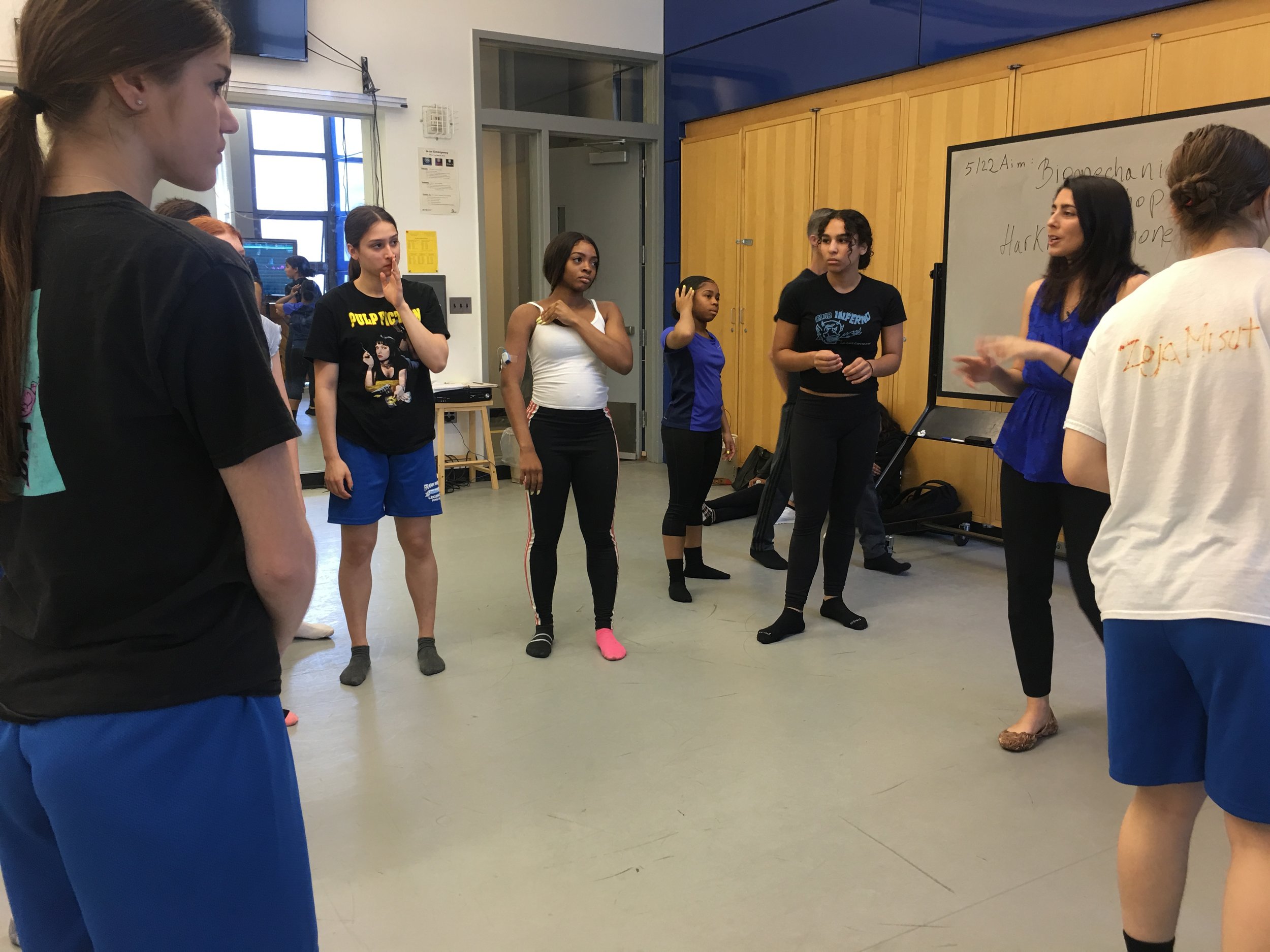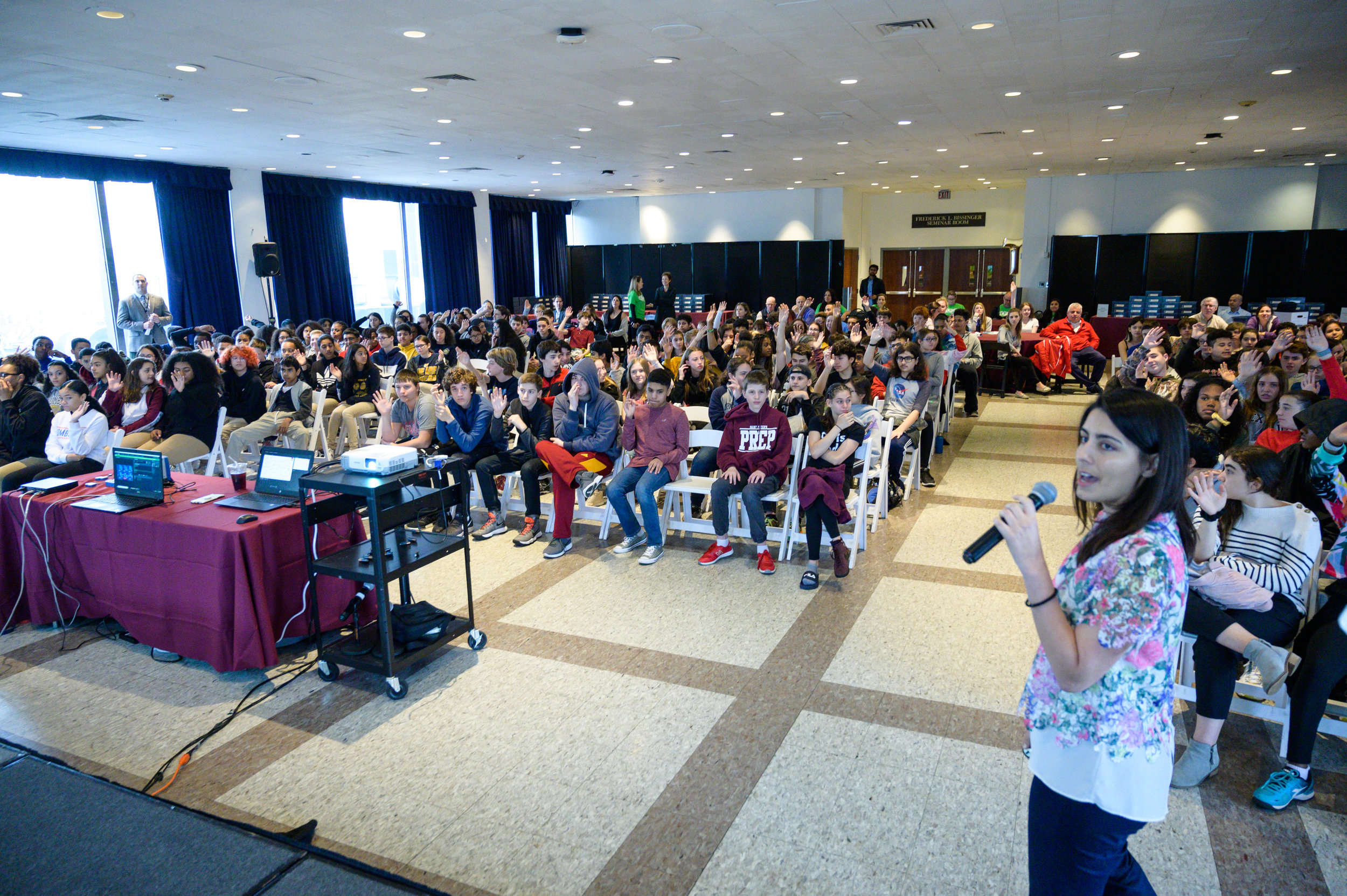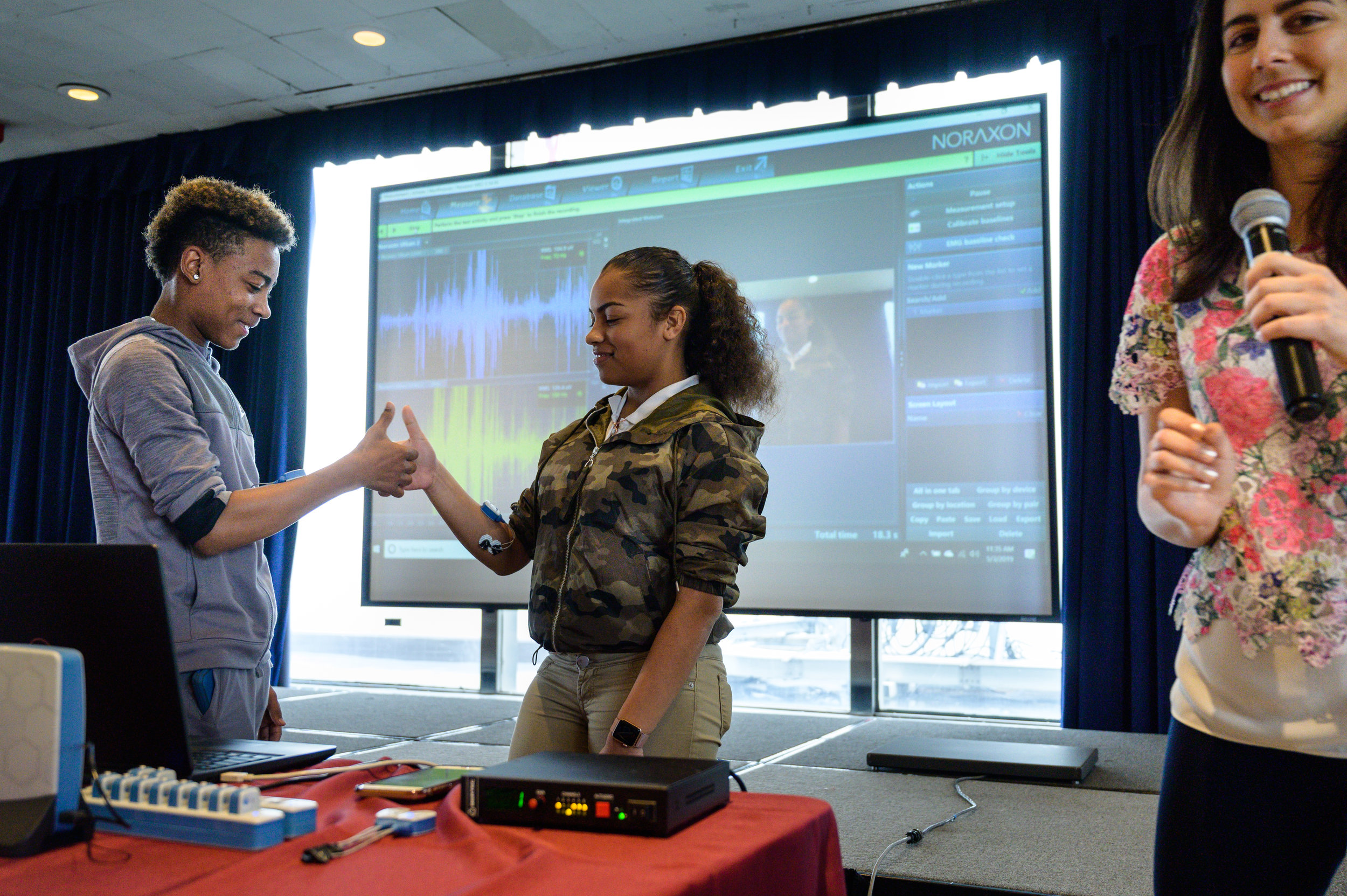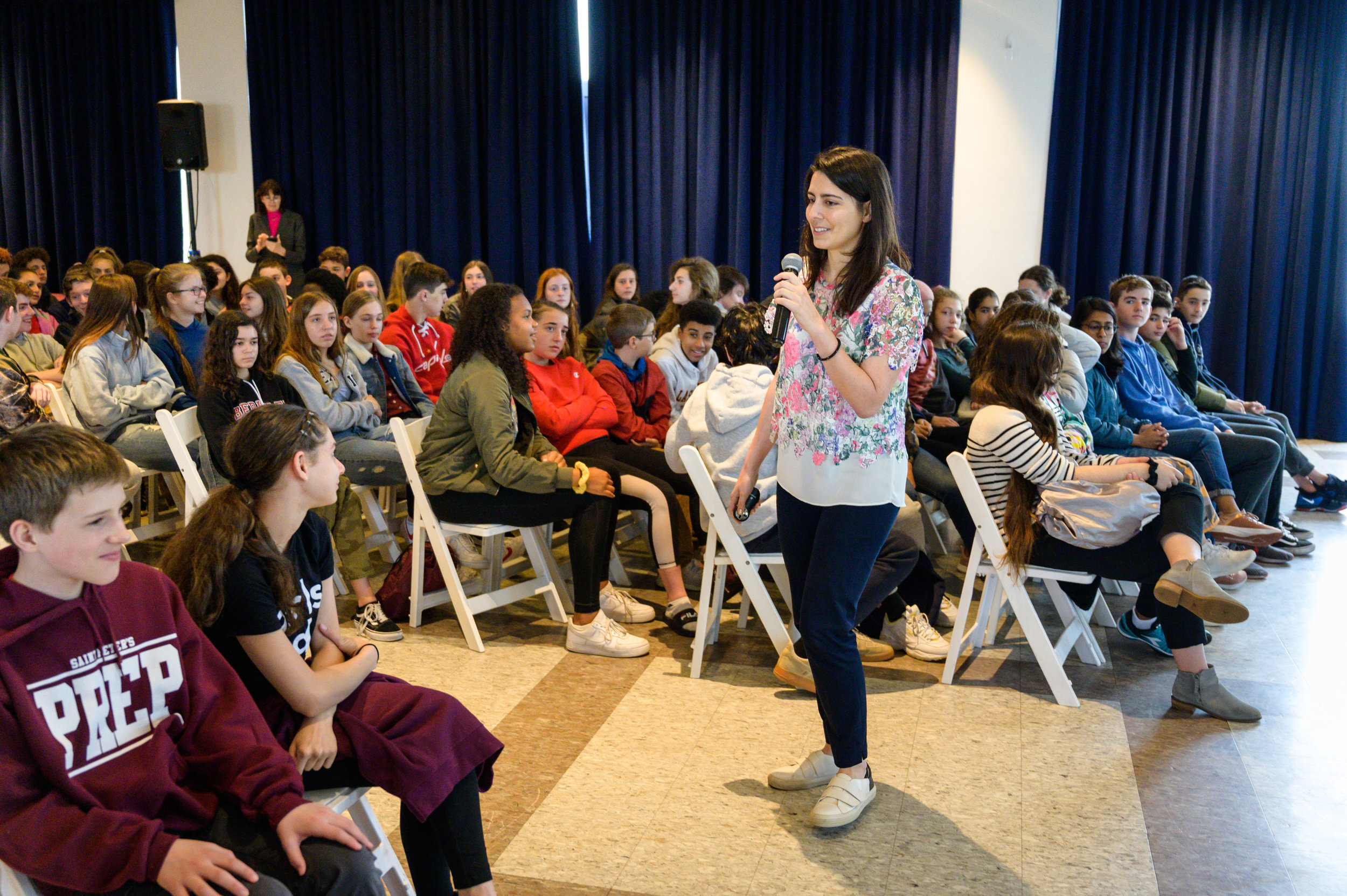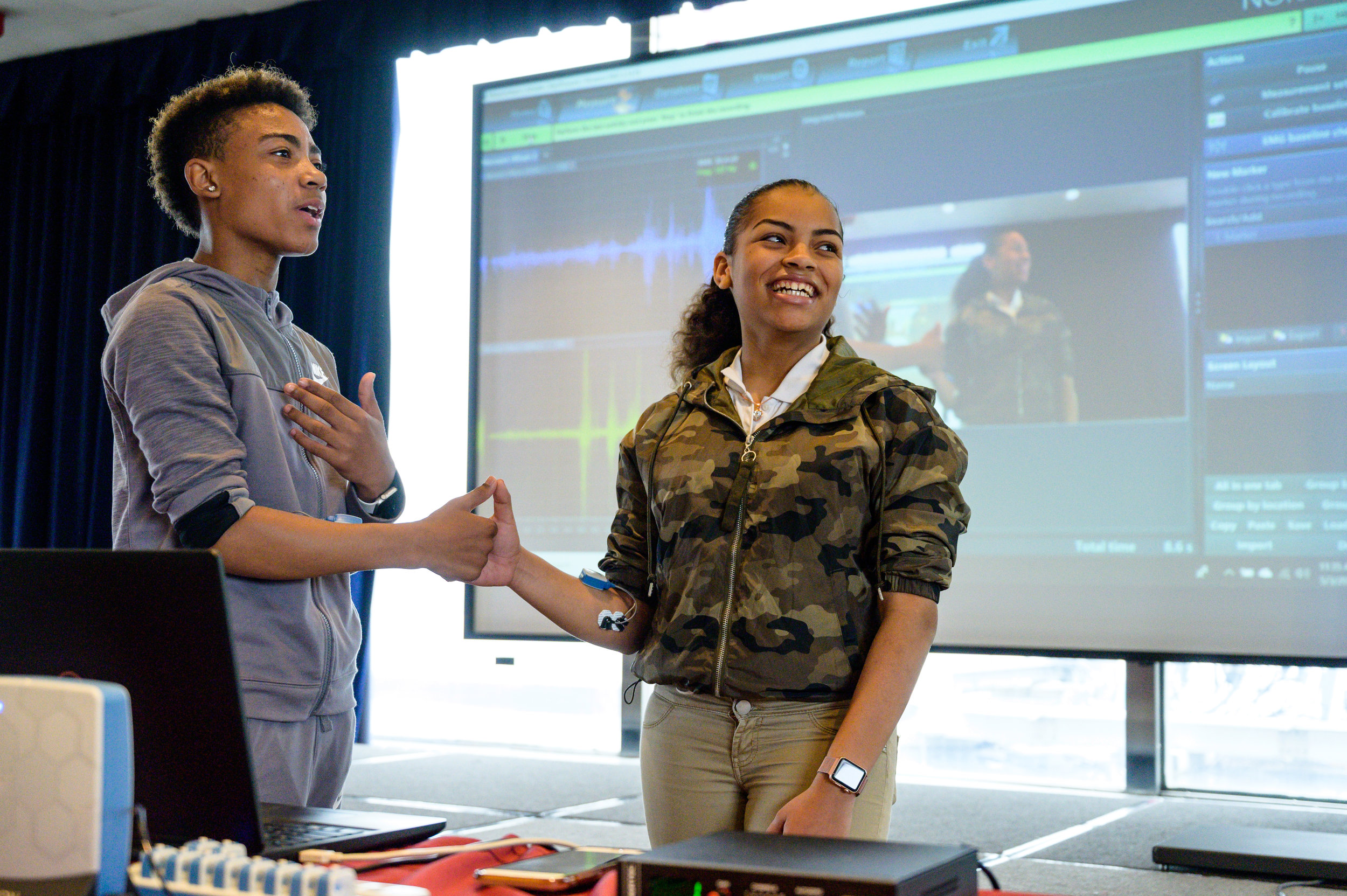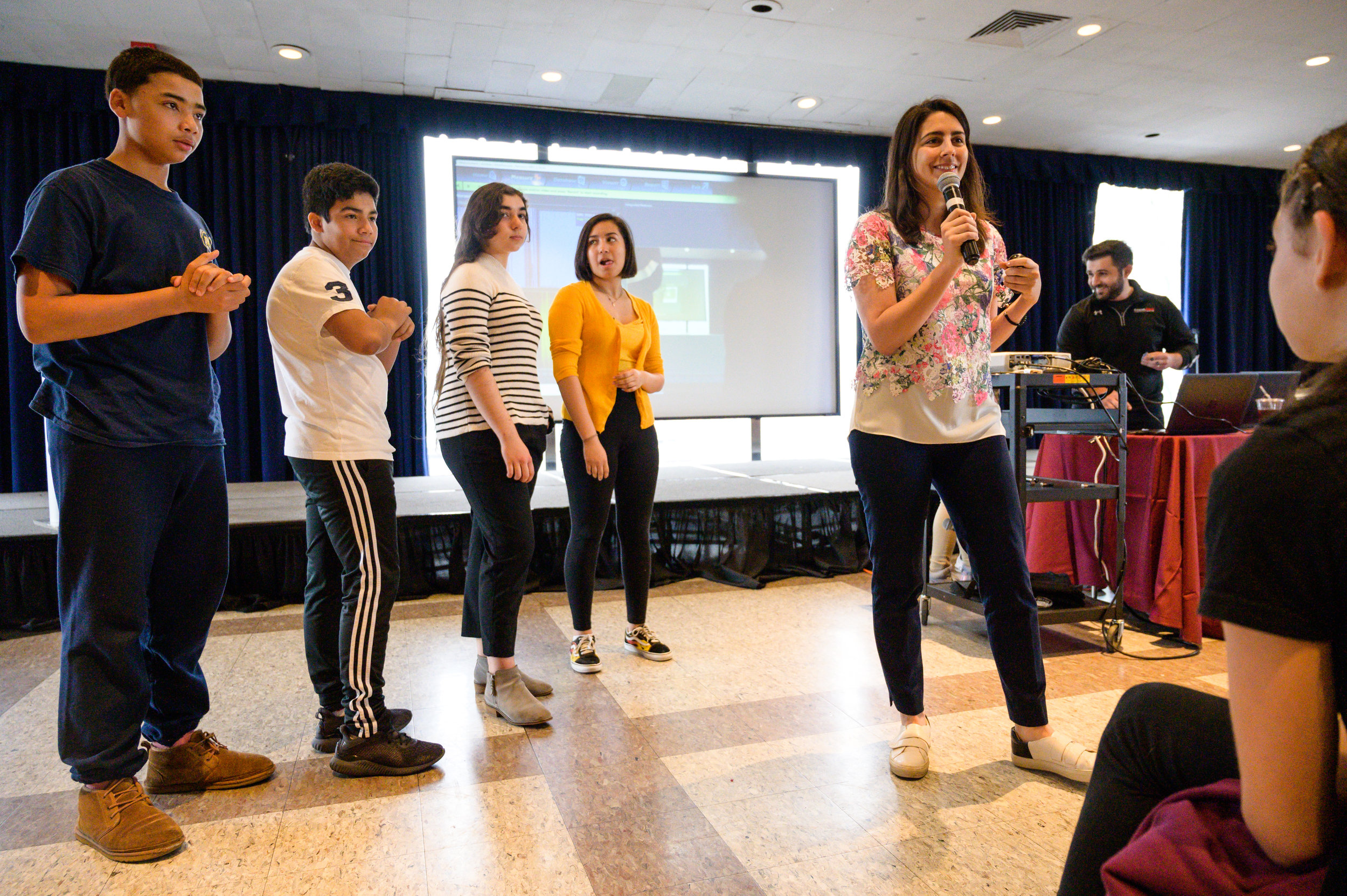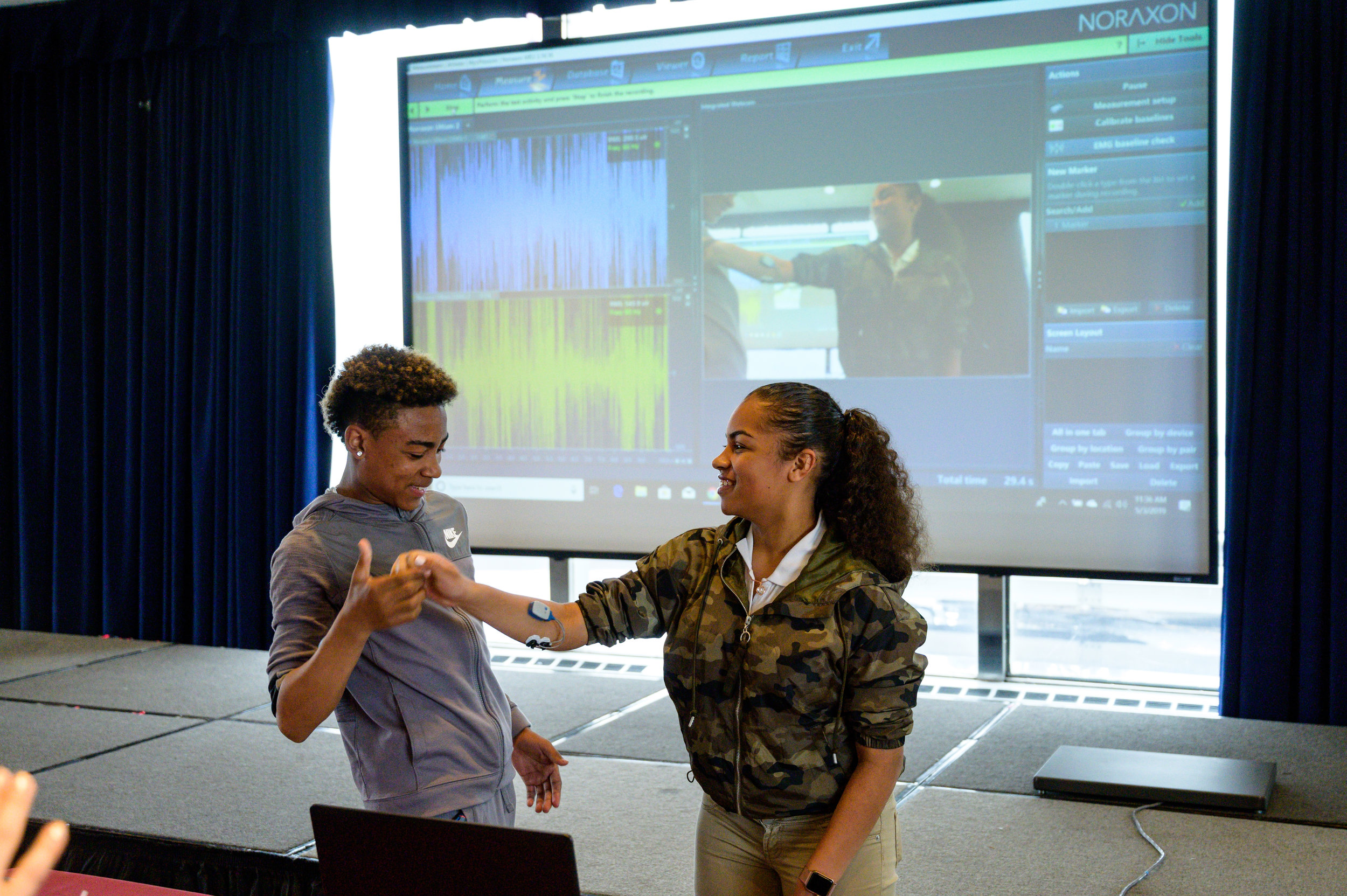STEAM Community Engagement
All STEAM outreach curricula has been uploaded to the American Society of Biomechanics open-source Teaching Repository and at the bottom of this page (click to jump to bottom of page). Check out @AZaferiou on twitter for more STEM outreach content.
Below are media from National Biomechanics Day events that engage middle and high school students in biomechanics and sonified biofeedback. Activities included choreography challenges to (1) accentuate a particular angular velocity and linear acceleration signal each group was assigned when using an inertial measurement unit, (2) highlight low, medium, and high activation levels of the muscle each group was assigned. with electromyography (EMG), and (3) use Newton’s Laws to hypothesize ground reaction forces during preferred dance movements. The choreography challenges are analogous to open-ended design challenges, and students were able to test their “prototype” choreography before presenting it to their peers at the end of class.
publication
Zaferiou AM. Dance-Themed National Biomechanics Day Community Engagement to Inspire our Future STEAM Leaders. J Biomech. 2023 Mar;150:111511. doi: 10.1016/j.jbiomech.2023.111511.
National Biomechanics of Dance Day 2024
National Biomechanics of Dance Day 2023
National Biomechanics of Dance Day 2022
National Biomechanics Day 2022
During National Biomechanics Day at Stevens, students were able to rotate to four different lab activities. In our lab, they were able to (1) see forces controlling their balancing and body movements of choice and (2) hear their side-to-side body sway by using sonified balance biofeedback developed by Stevens students in our course, BME/ME 561. Students were able to see their ground reaction forces in real-time during different walking and body movements of choice. Then, students were able to sway side to side and try the balance sonification system (using the coursework project mentioned prior). Other activities included: Hearing neuronal activity of cricket legs (led by Prof. George McConnell’s lab), using virtual reality and markerless motion capture and avatar generation for rehabilitation and improved sense of agency (led by Prof. Ravi Nataraj’s lab), and dissecting different biological tissues to relate structure and function (led by Prof. Johannes Weickenmeier’s lab).
National Biomechanics of Dance Day 2021
In 2021, the lab hosted two National Biomechanics Day events virtually! Events were co-hosted by Professor Teal Darkenwald of East Carolina University and The Biomechanics Initiative. Below the image gallery, we have short videos and questionnaires for you to fill out and submit to guide your learning about dance biomechanics.
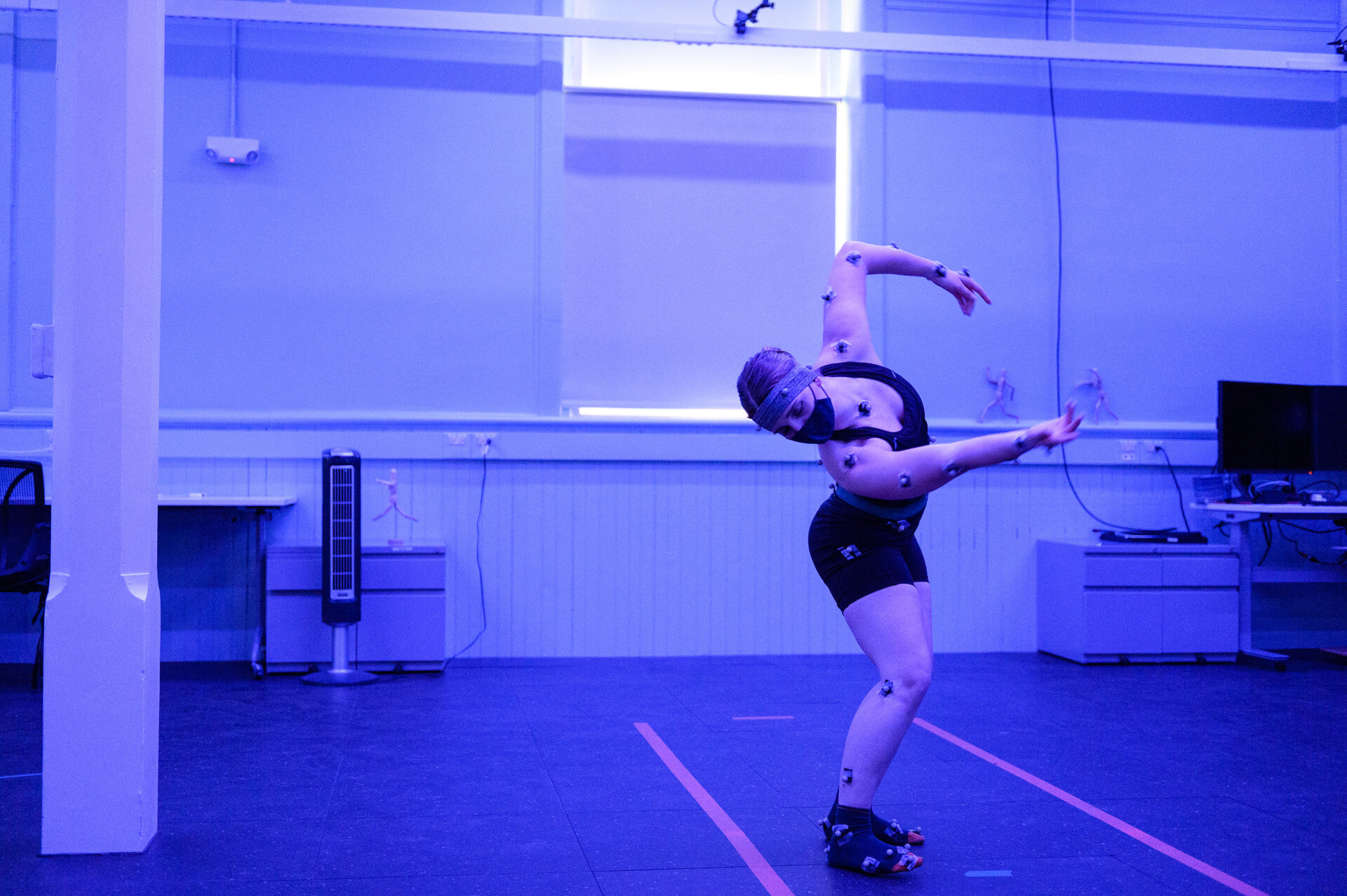
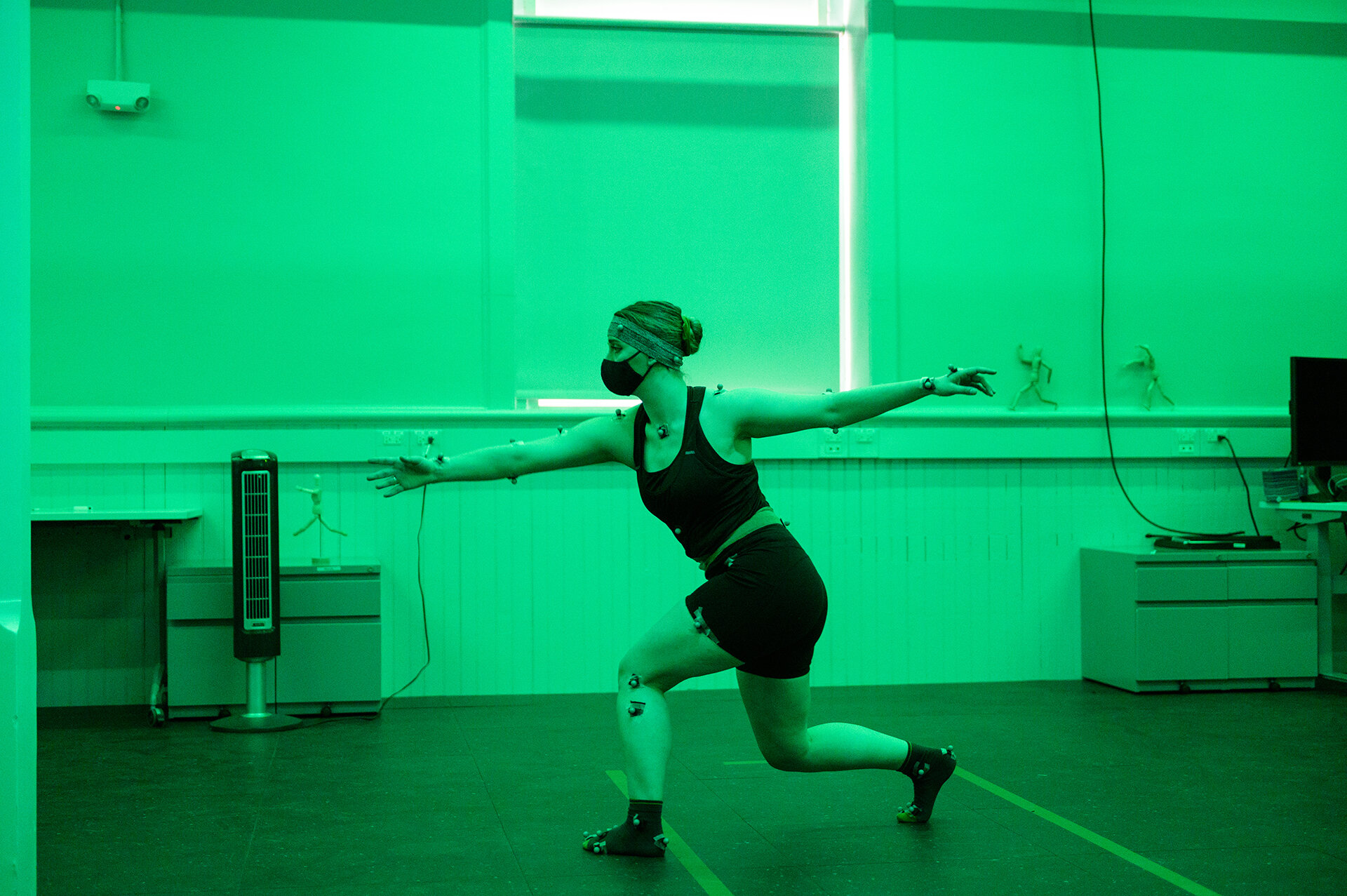
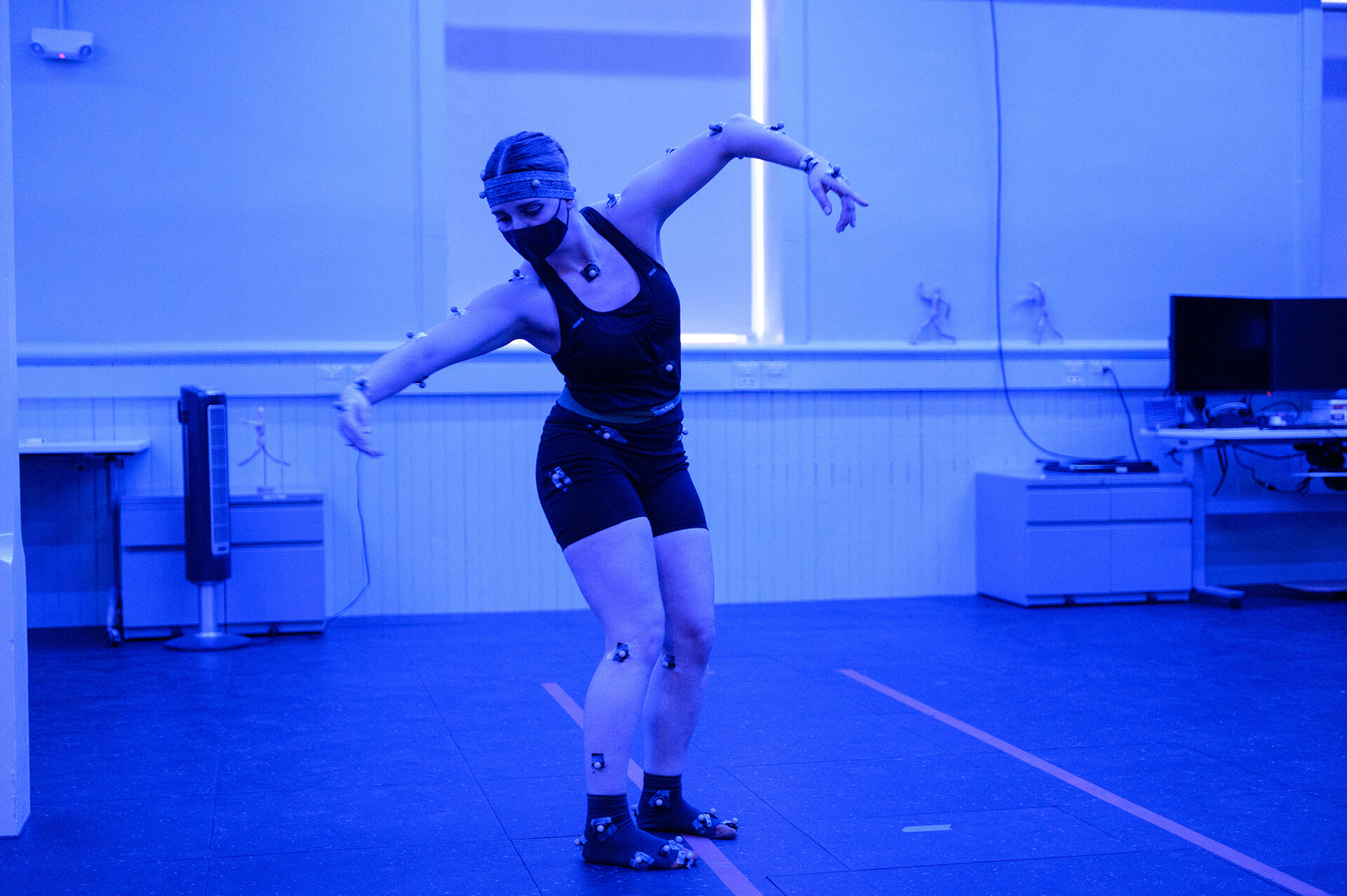
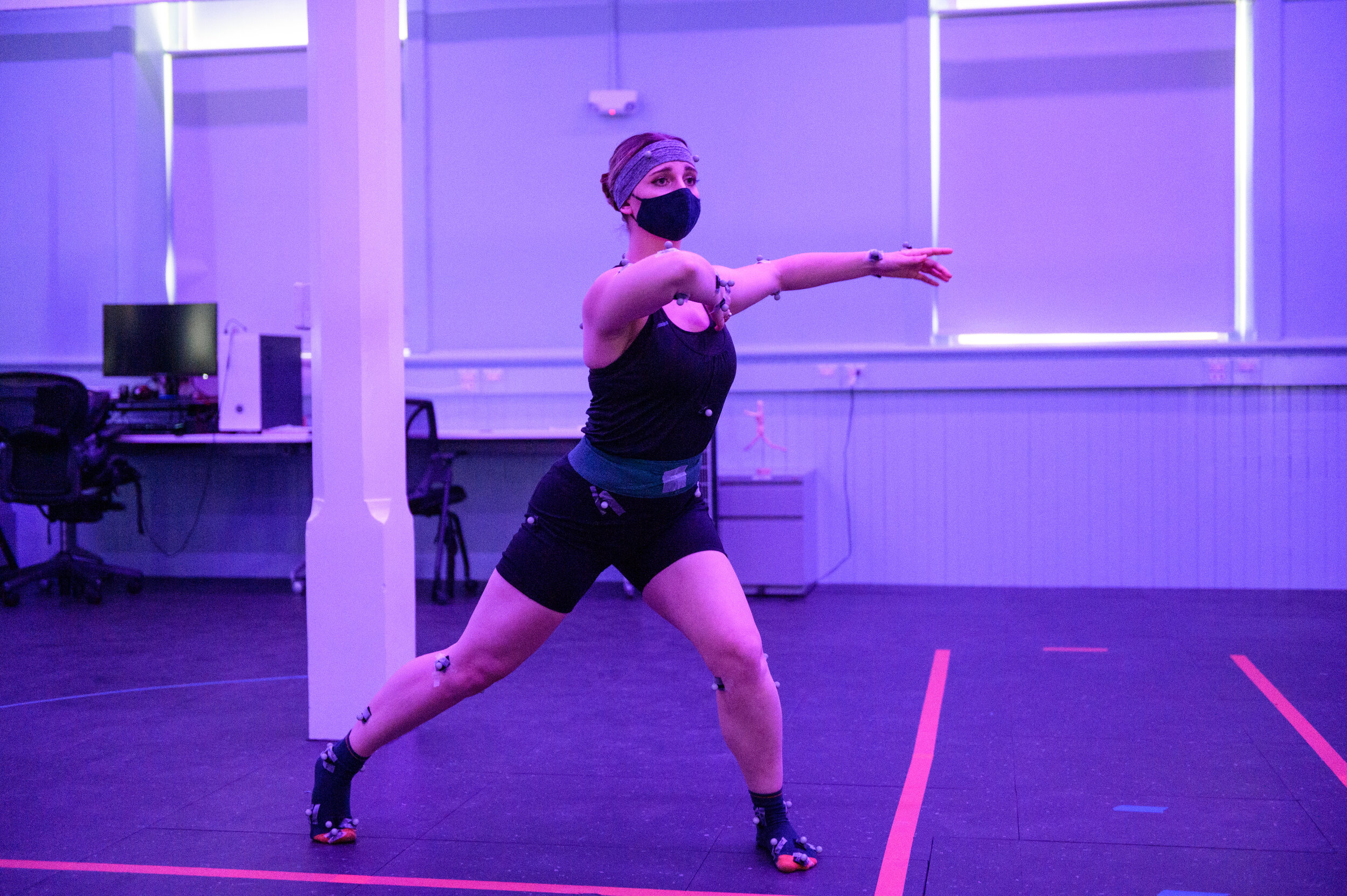
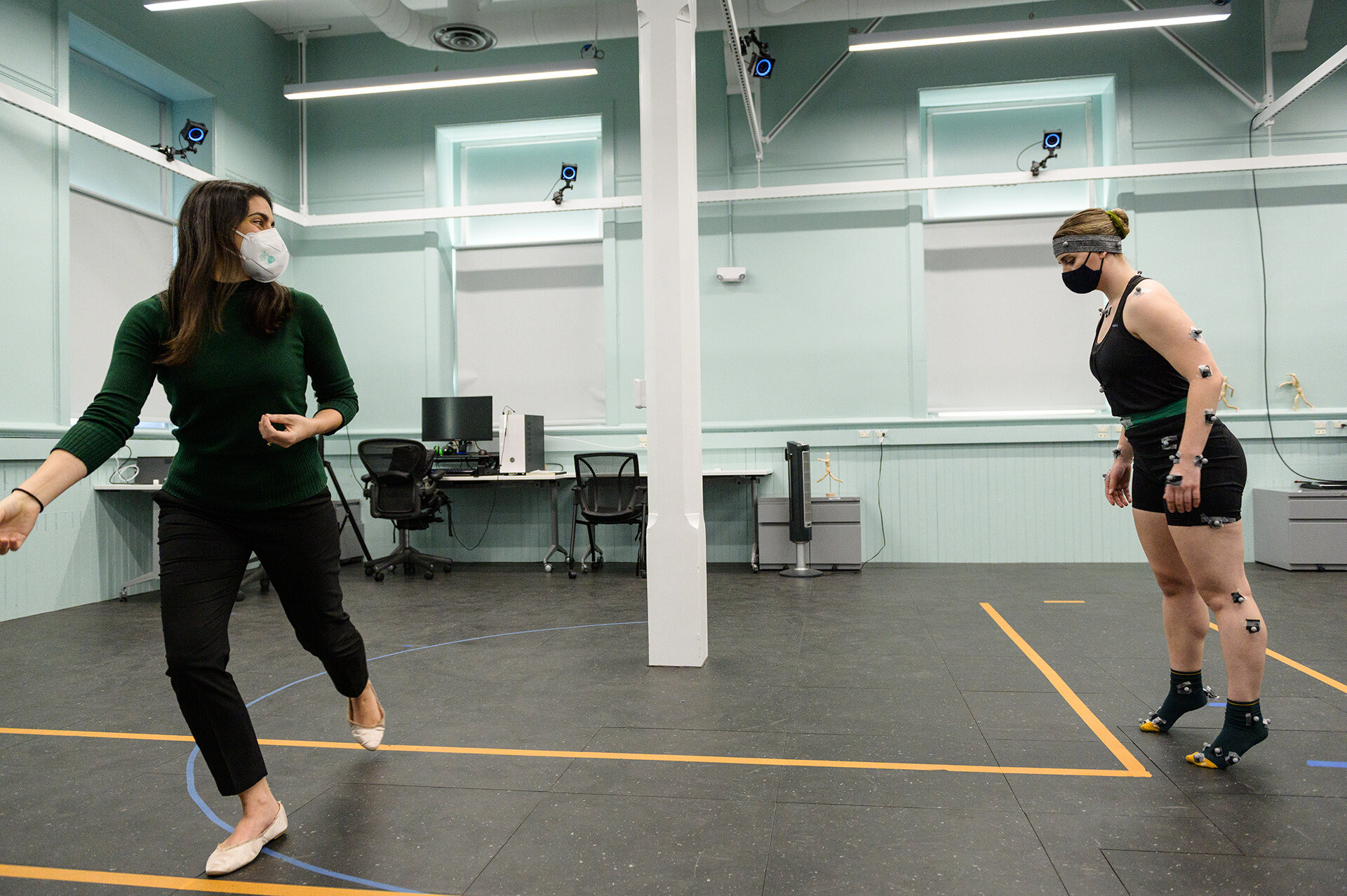
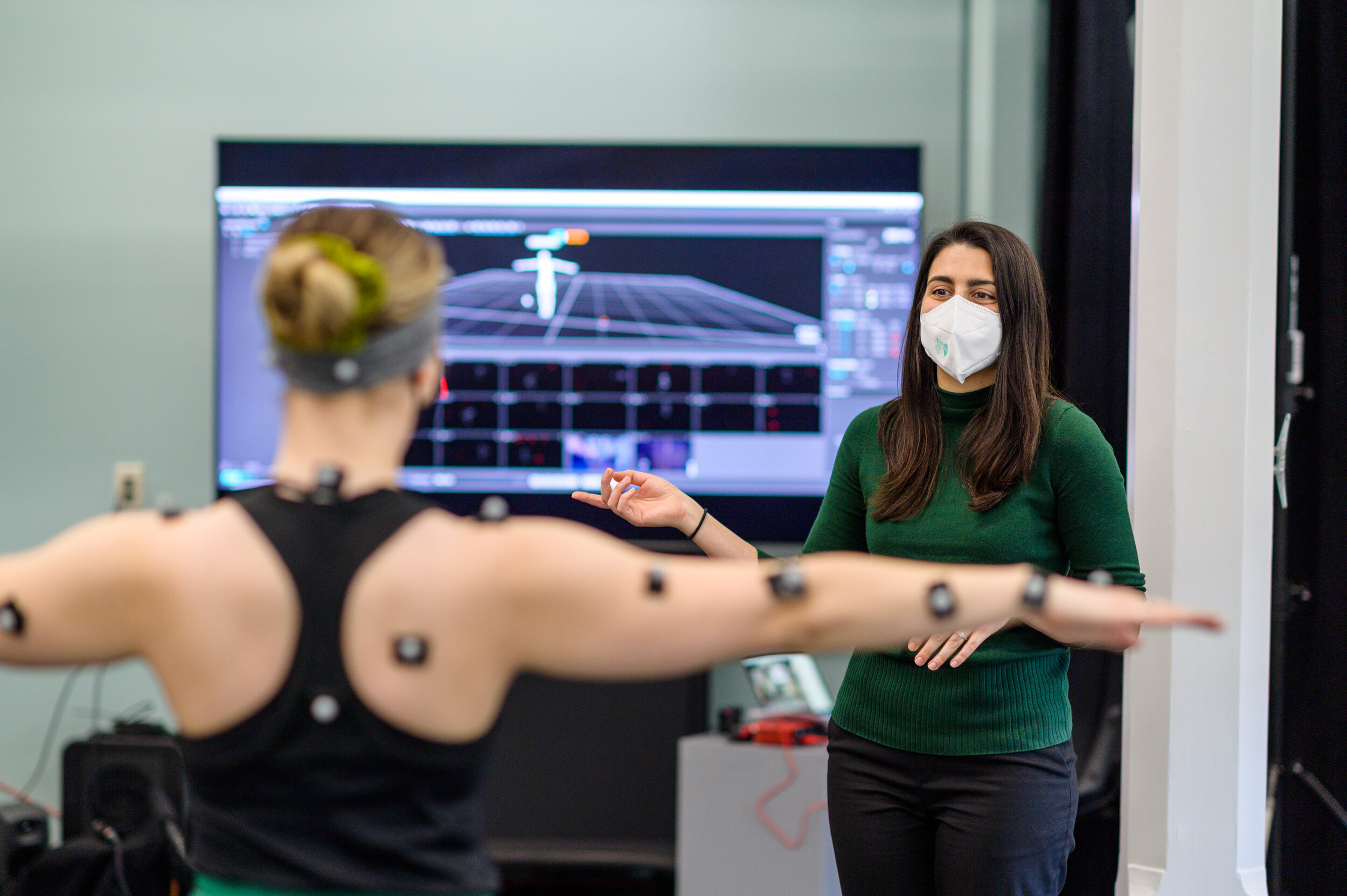
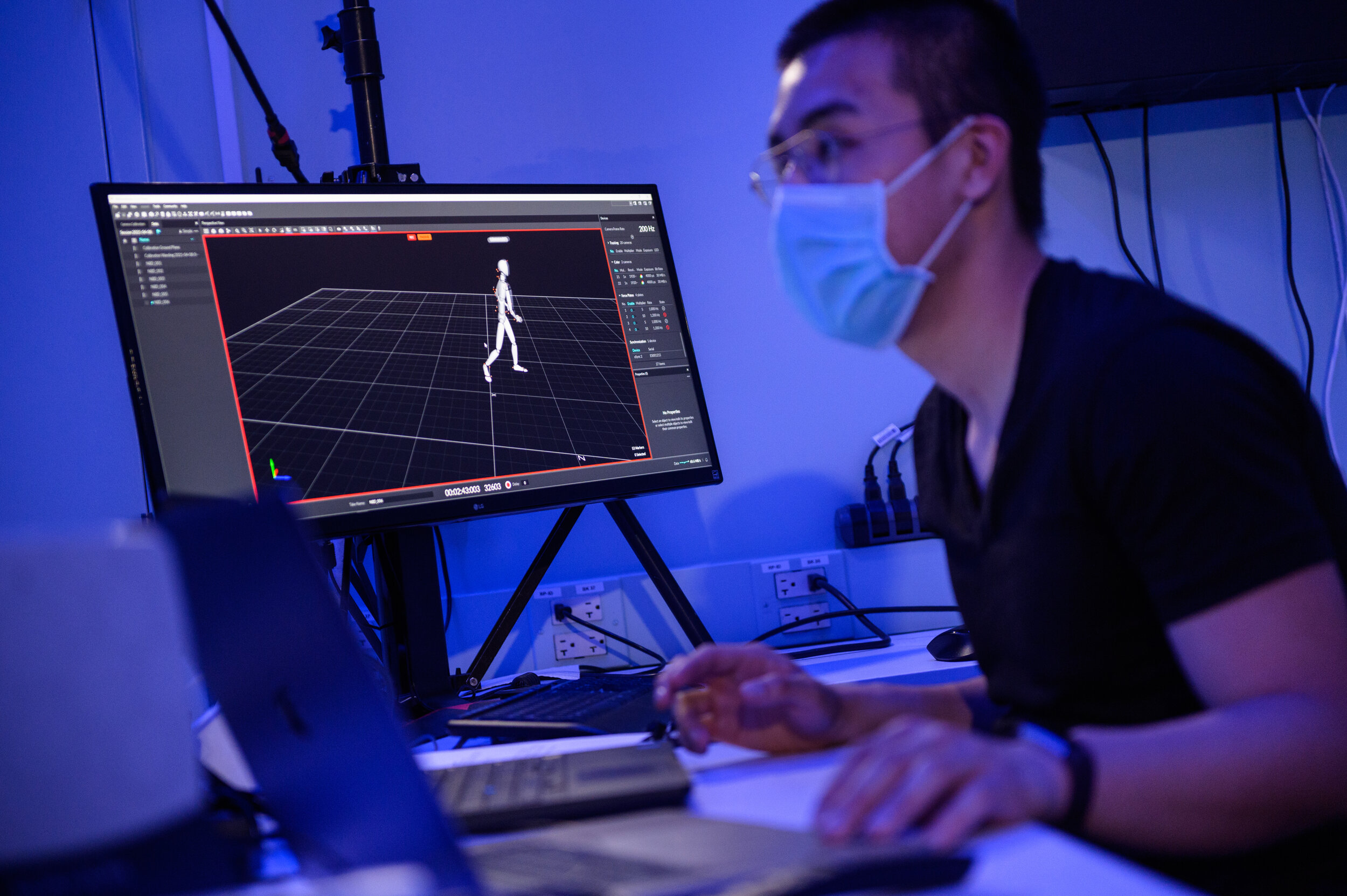
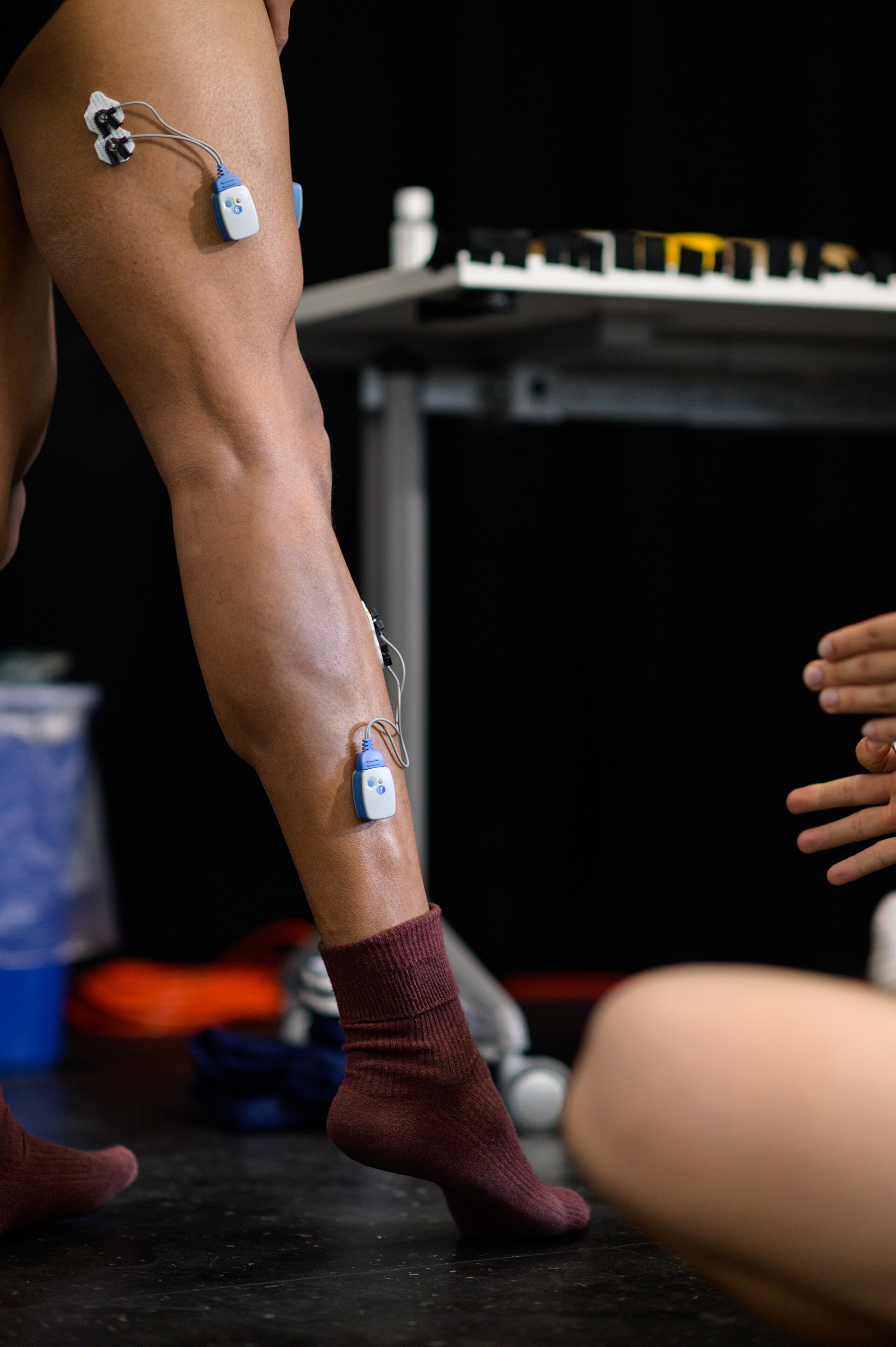
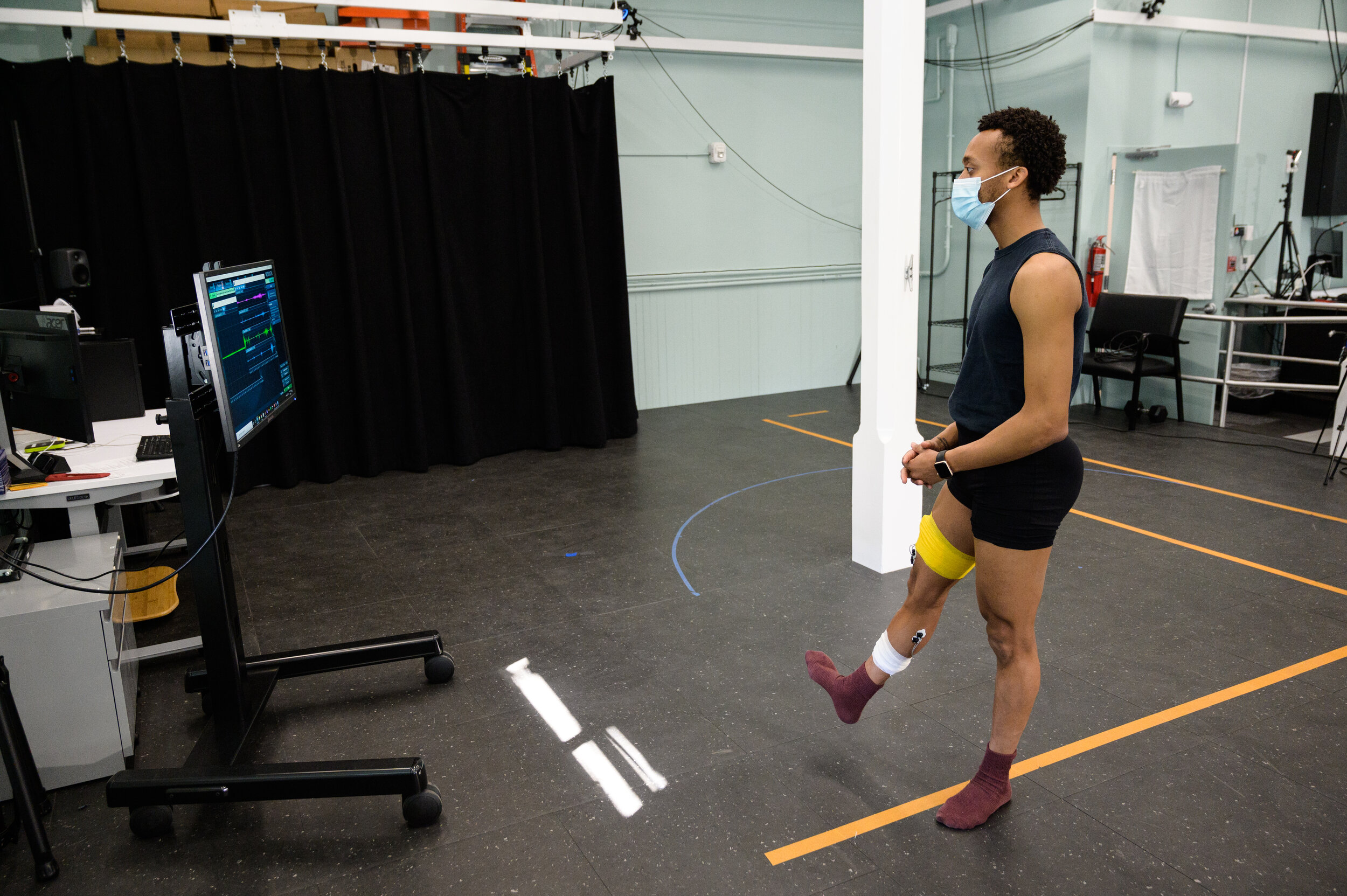
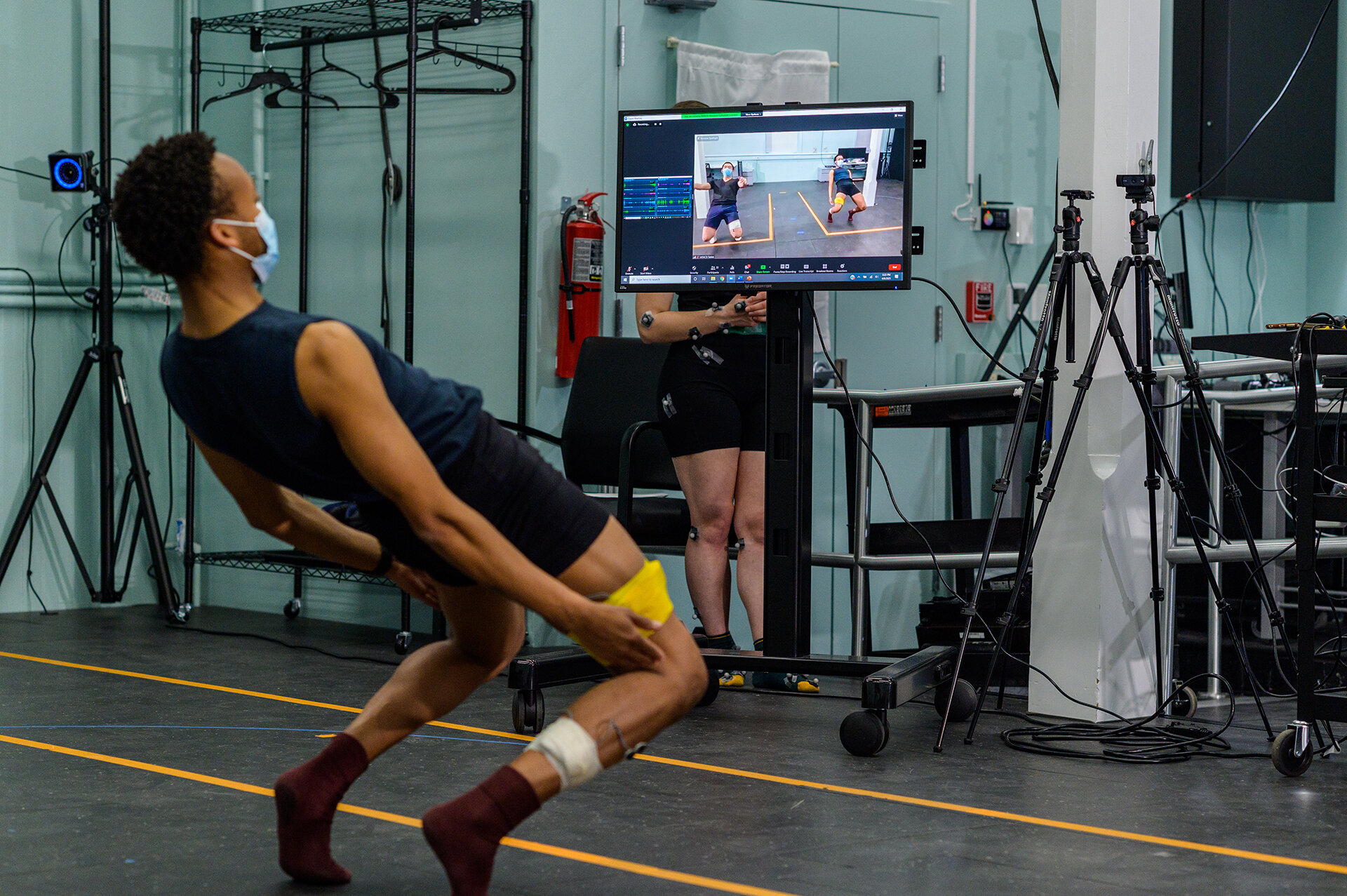
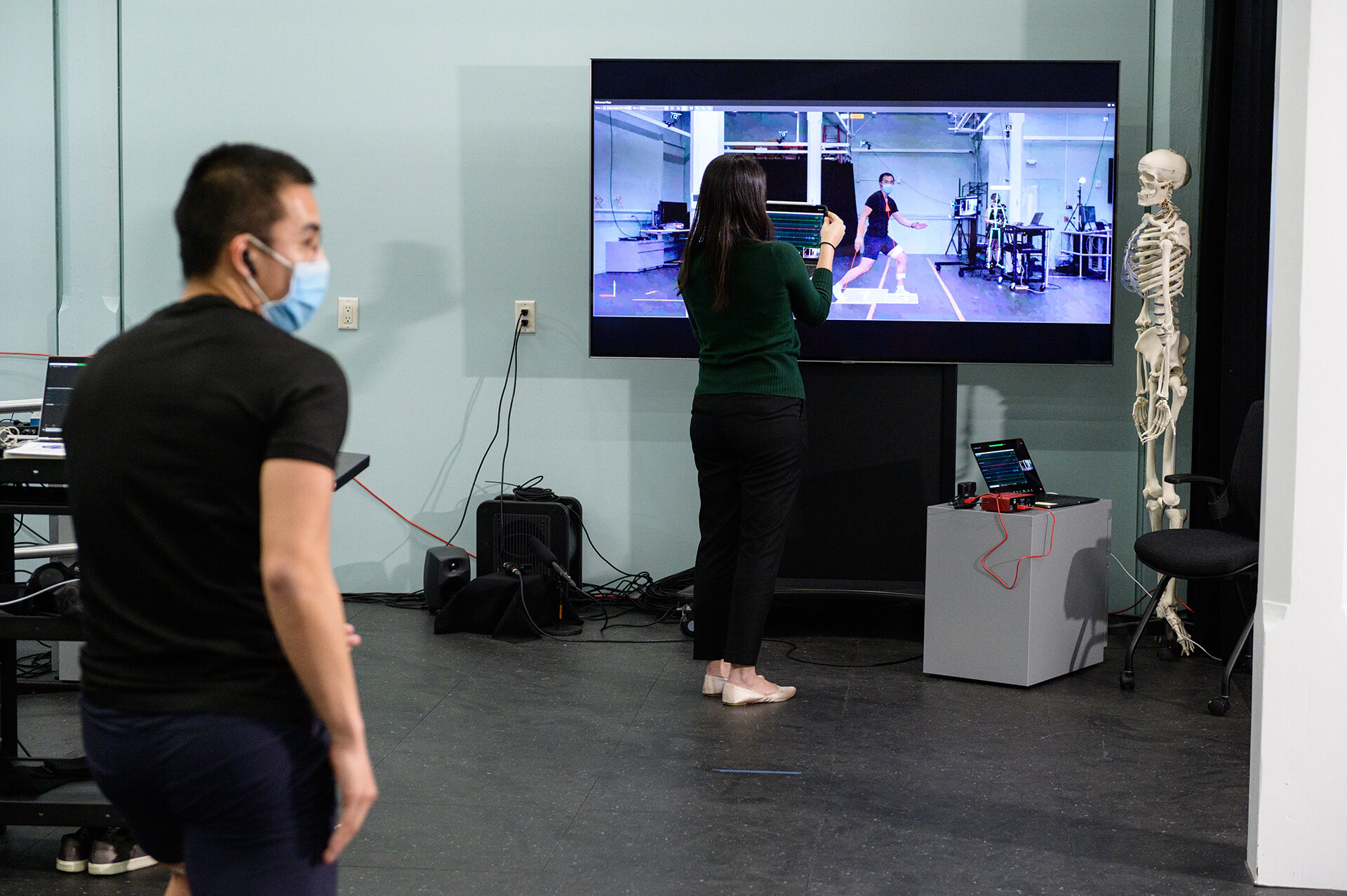
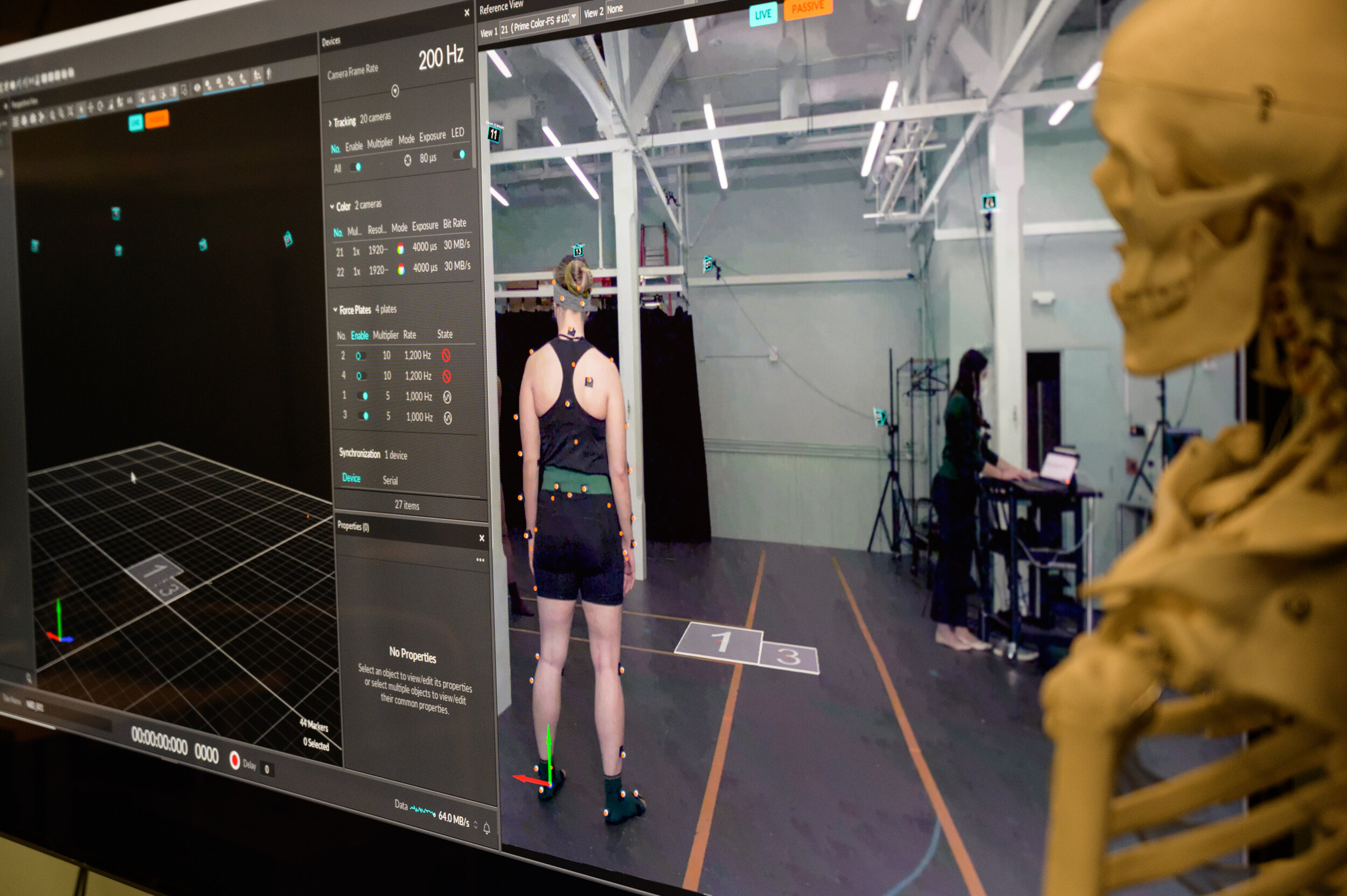
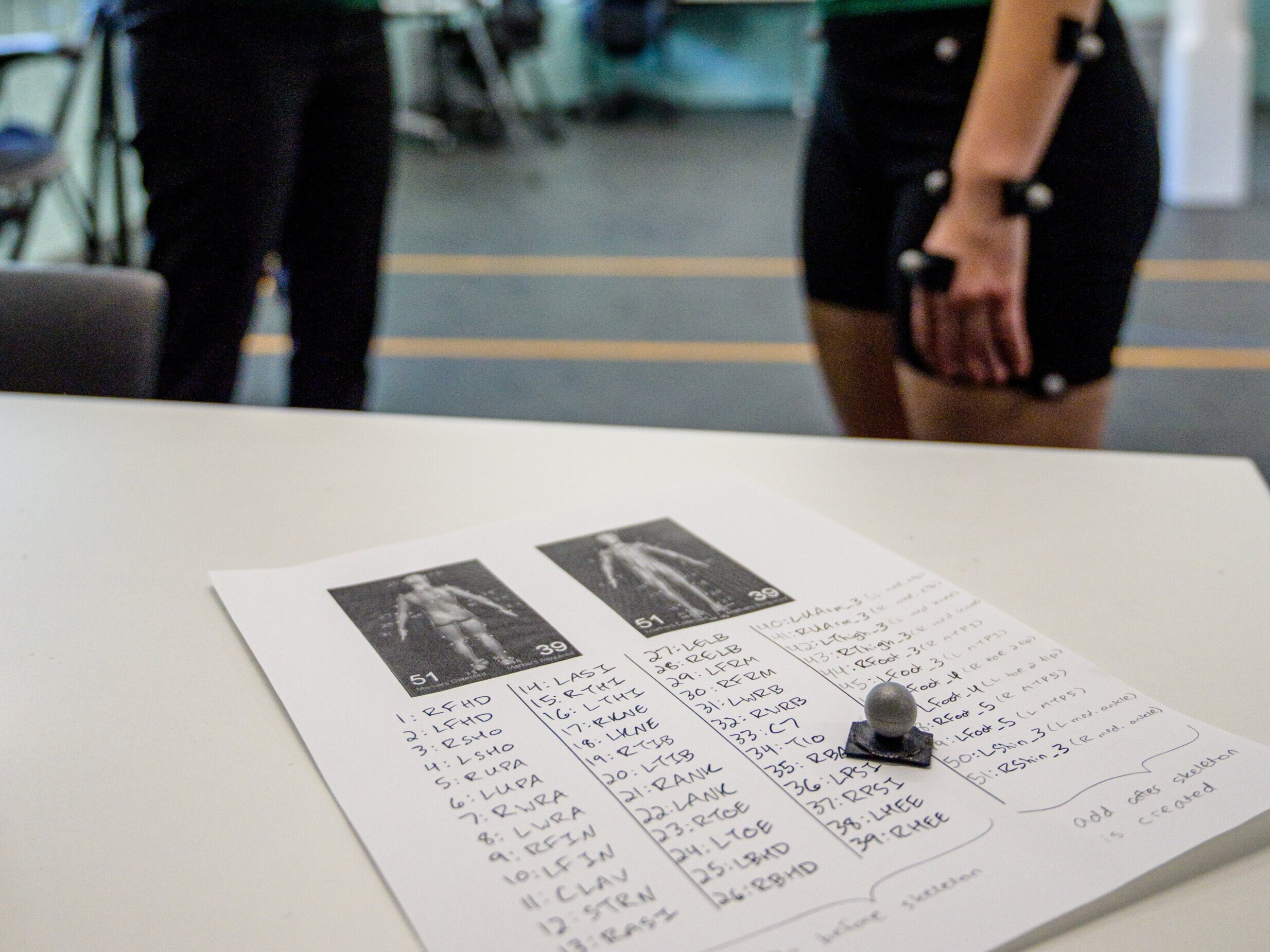
In the following video, you will be introduced to dance biomechanics as a field of study. This video features dancer Zophia Jackowski.
In the following video, dancer Shannon Wright demonstrates a motion capture “sonification system”. The system was designed by Dr. Luke Dahl, Dr. Christopher Knowlton, and Dr. Antonia Zaferiou. This video excerpt was taken from a virtual National Biomechanics Day event to excite young dancers about the field of biomechanics. The next video provides a brief introduction to sonification and optical motion capture with dancer Zophia Jackowski.
The following video demonstrates electromyography and force sensors in our lab. This demonstration is provided by our doctoral student, Sam Liu and dancer Donterreo Culp.
Electromyography, or “EMG” for short, measures the electrical activity (in voltage) within a muscle. Each time we want to move, the brain sends electrical signals to the muscles through nerves to activate their “contractions”. When muscles contract, they try to shorten themselves (though, there are cases when the muscle is activated, yet is being stretched at the same time). EMG is studied in biomechanics to understand the coordination of muscle activation. There are surface electrodes “sEMG” that are affixed to the surface of the skin and fine-needle electrodes to measure activation of muscles deep under the skin and other muscles. Recently, smart textiles have been developed including sEMG!
In the previous video, the raw EMG signal video included a demonstration of how the lower limbs used specific muscle activation patterns to apply forces to the ground that were measured by in-ground “force platforms”. These force platforms can be thought of as fancy bathroom scales that not only measure vertical forces, but also side-to-side or lateral forces. In order to move through space, we need to interact with the environment through reaction forces. As we apply forces to our environment, the environment pushes back on us with equal sized, but opposite-direction forces.
The final video from our National Biomechanics Day features dancers Olivia Chesneau and Zophia Jackowski demonstrating electromyography, overhead cameras, and in-ground force sensors.
National Biomechanics Day Events 2019
In 2019, the lab hosted two National Biomechanics Day events! one included ~250 8th graders visiting campus and the other was a dance-specific event at a NYC public high school. To learn more about the international and national National Biomechancis Day community, please click here.
High School Dance Class visit for interactive biomechanics day
Undergraduate Research Assistants Joseph and Audrey assisted during interactive lessons with 11th and 12th grade NYC public school dance students! We partnered with Harkness Center for Dance Injuries and Nicholas Institute of Sports Medicine so that we split the large class into two groups so each lesson was with about 20-35 students. After an introduction to biomechanics as a whole group, the students were split into two groups to rotate between two lessons. Our partners held a lesson about jumping mechanics and injury prevention, while our lab provided a lesson that challenged dance students in groups of 3-5 to design dances that activated a muscle they were assigned with a clue card. The clue card showed them a diagram of the muscle, and notes about where the muscle starts and ends. After learning that active muscles want to shorten, students were prompted to brainstorm in their small groups to decide what that muscle does when it activates and how they should stretch the muscle. Students had about 10-15 minutes to design a dance that features activation of the muscle, while one student from the group had a sensor placed on that muscle and the EMG signal displayed while sharing their dance with classmates.
8th graders introduced to biomechanics as a field of study
Students were introduced to biomechanics as a field and participated in “muscle thumb wars” by having a representatives from each school compete in thumb war with “electromyography” sensors monitoring their forearm muscles that control their wrists/thumbs. Electromyography measures the electricity (electro-) travelling through muscles (-myo) when the brain sends commands for the muscles to contract. Note, “thumb war” was chosen as the activity vs. arm wrestling because the placement of the sensors on the forearm is less invasive than the upper arm and allows for wider participation (in GK-12, it limits “macho man” stereotypes/comments).
GK12 OUTREACH LESSON CURRICULA
lessons listed below have been developed over the years for GK-12 outreach and workshops. Some of this curricula preparation was supported by NSF GK-12 Award # 1045595.
Dance Biomechanics National Biomechanics Day
click here for lesson content
dance biomechanics introduction slides
click here for lesson content
Cardiovascular biomechanics and engineering
click here for lesson content
PROSTHESeS and exoskeletons
click here for lesson content
“Exploring the intersection of dance and biomechanics” with Dance prof. Teal Darkenwald
click here for lesson content
movement analysis and biomechanics
click here for lesson content




